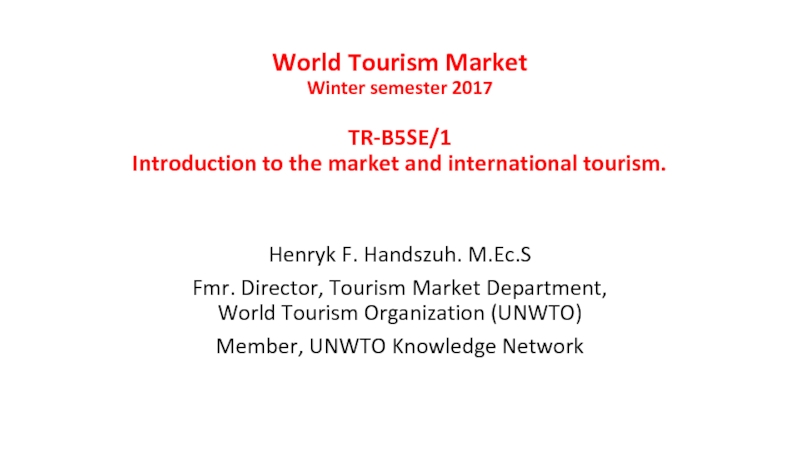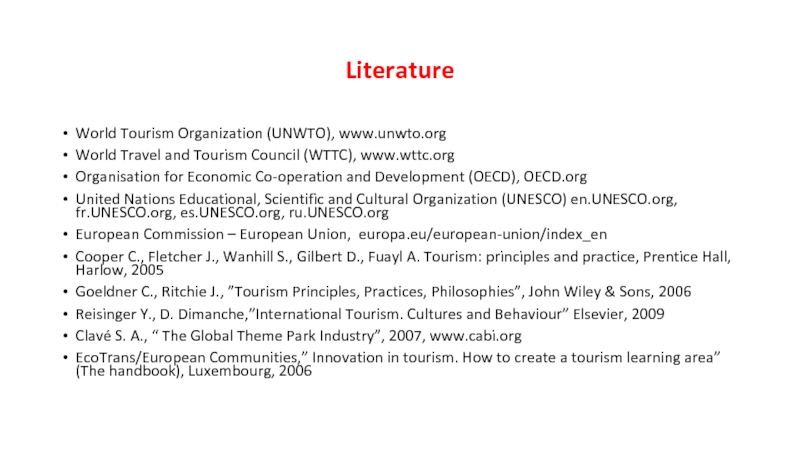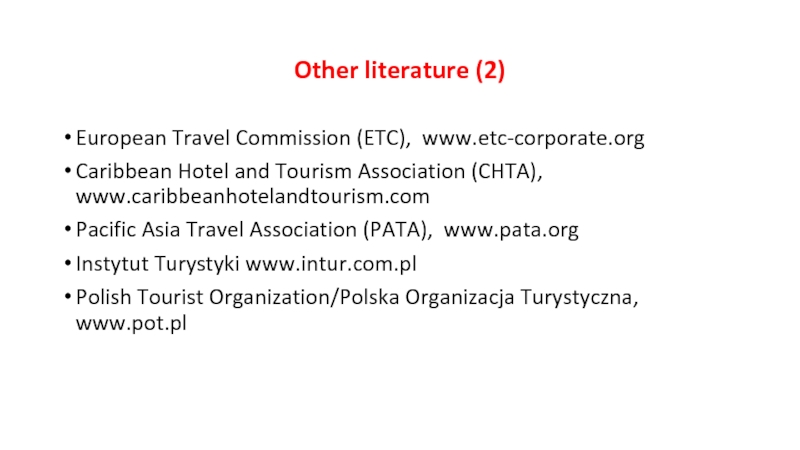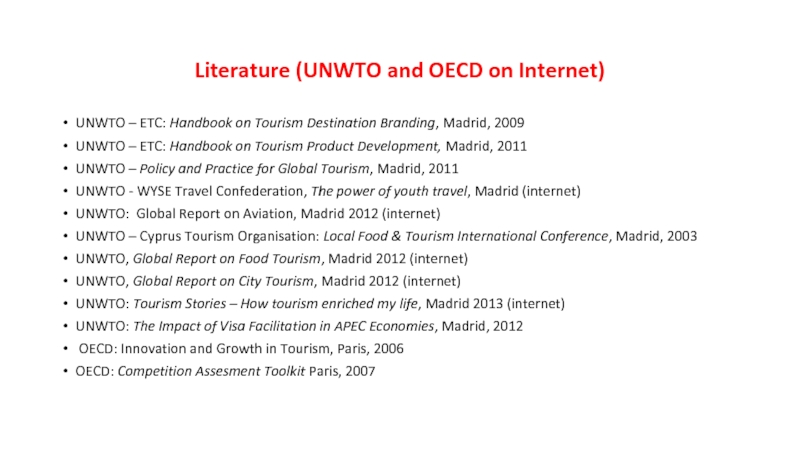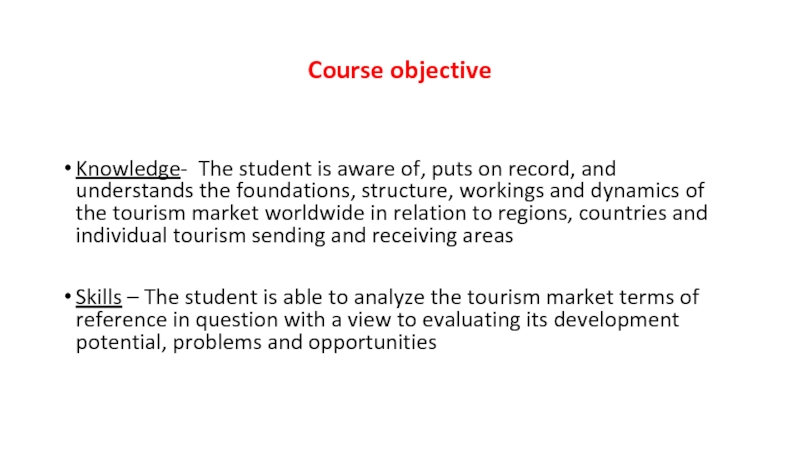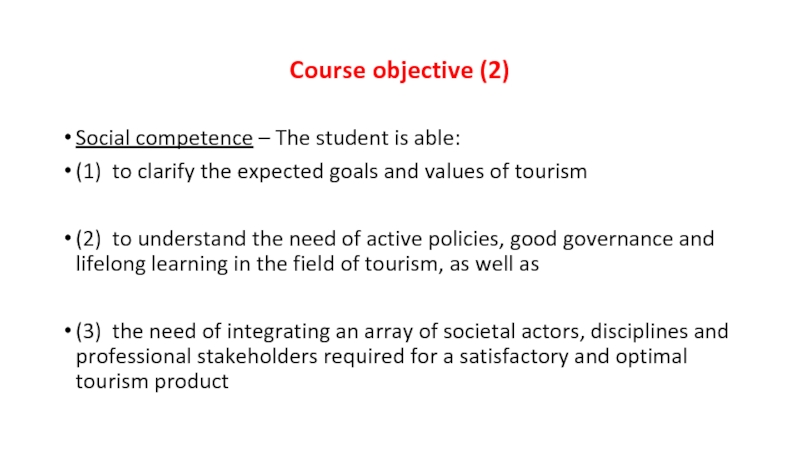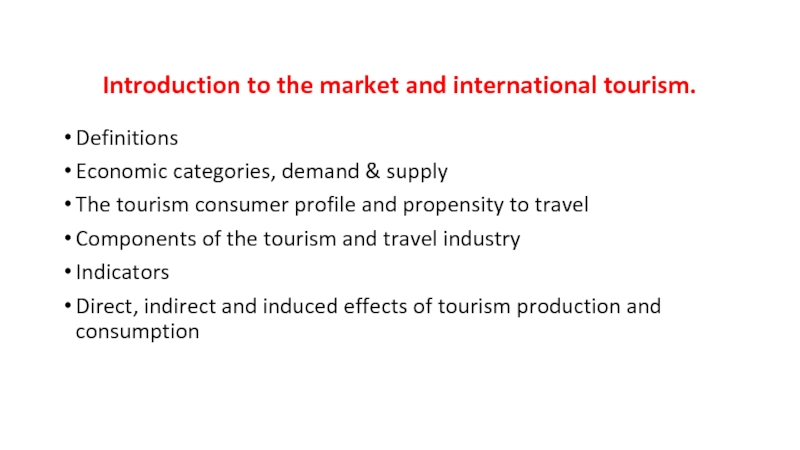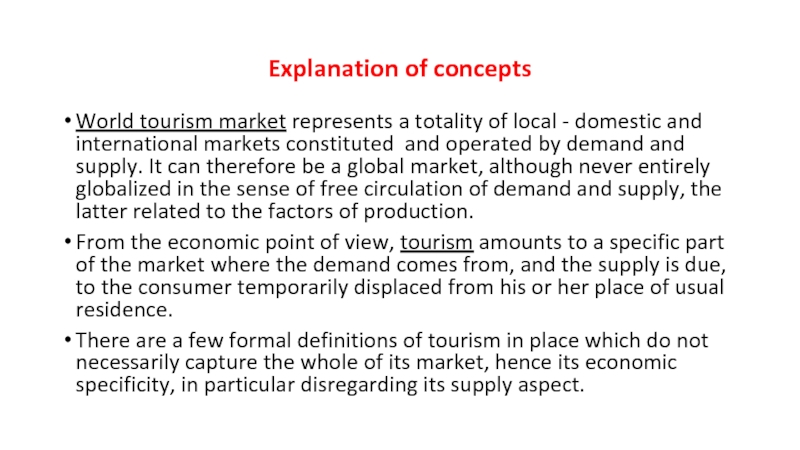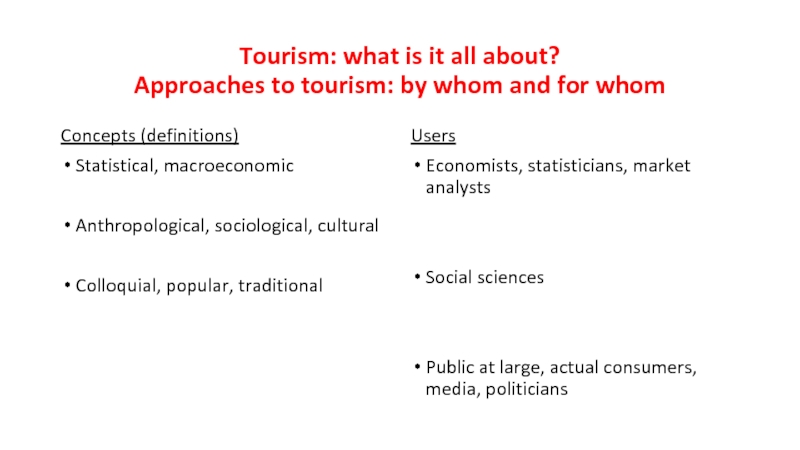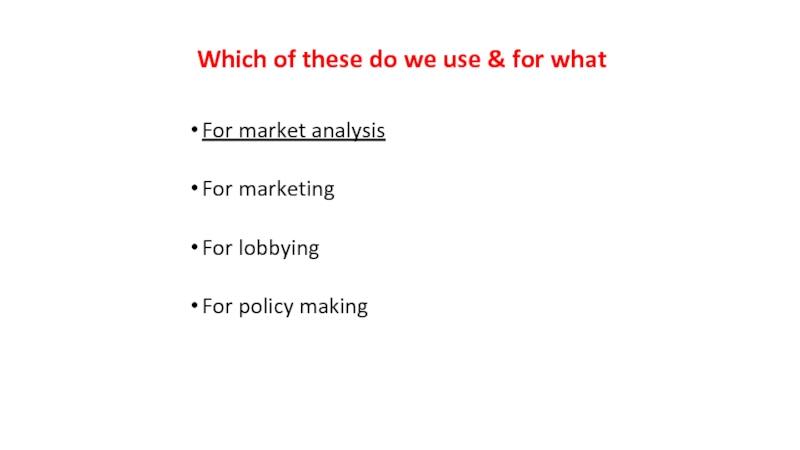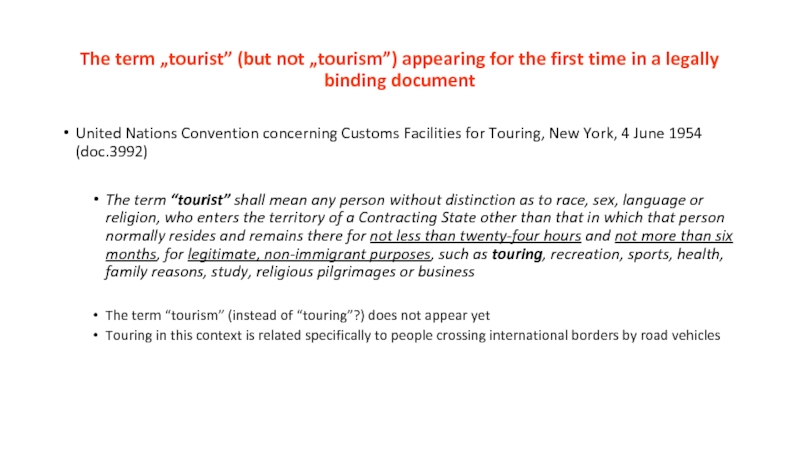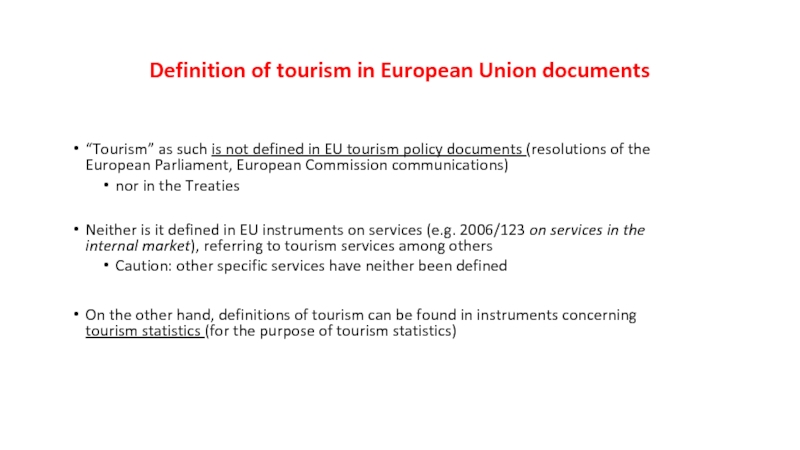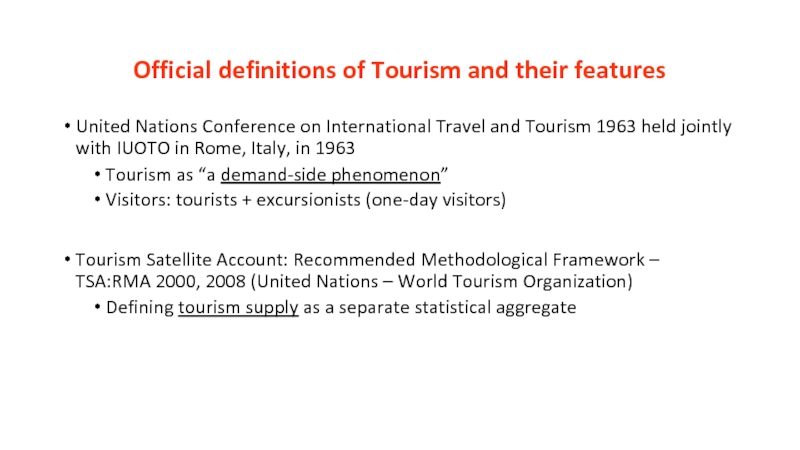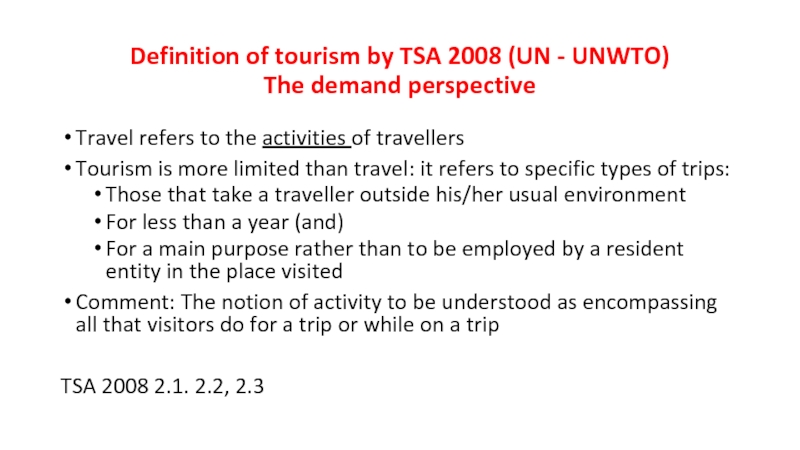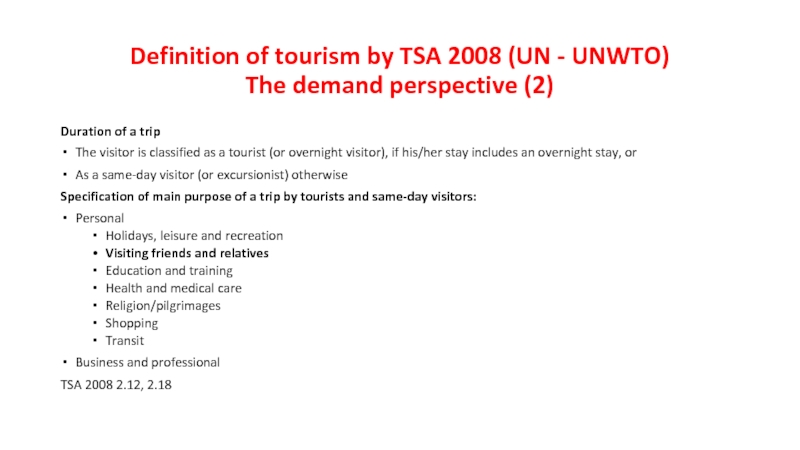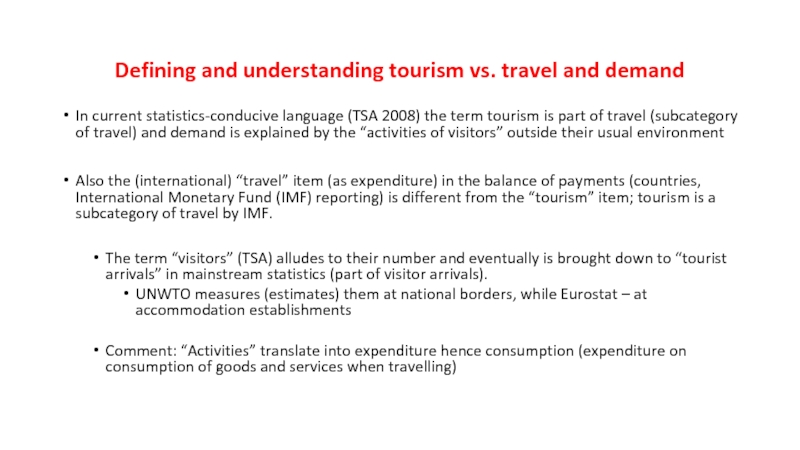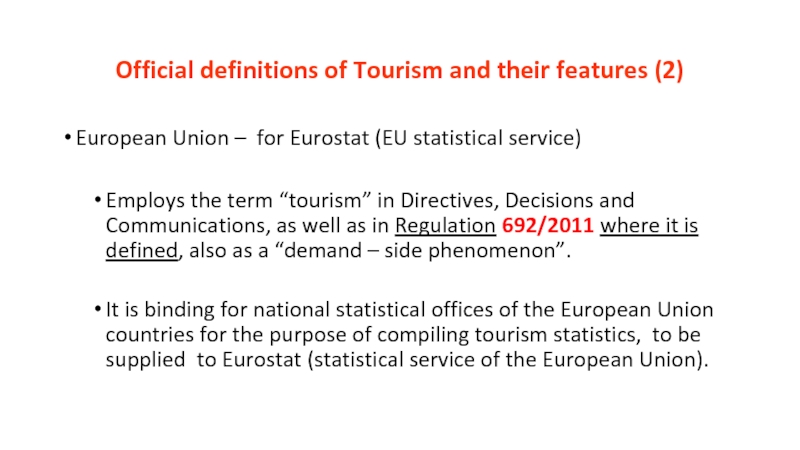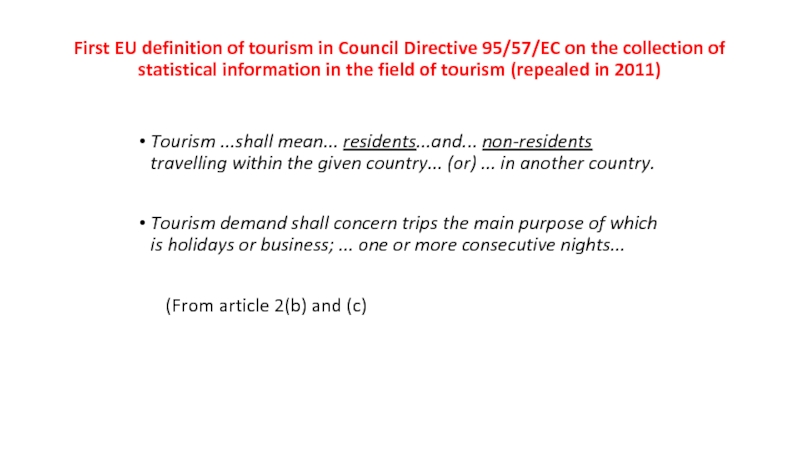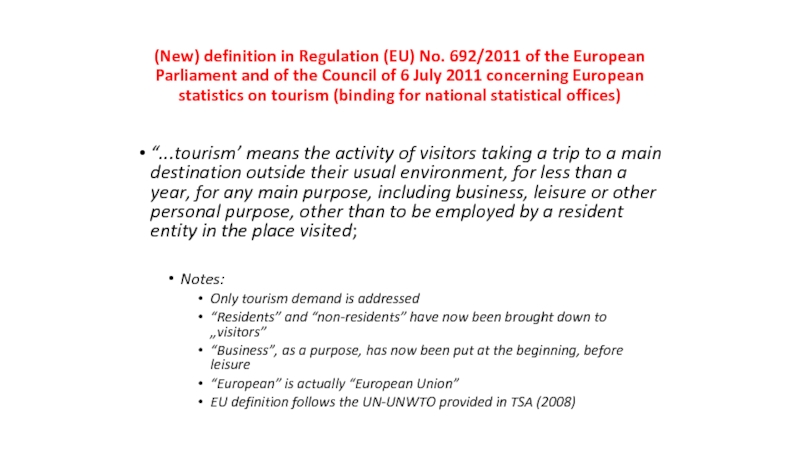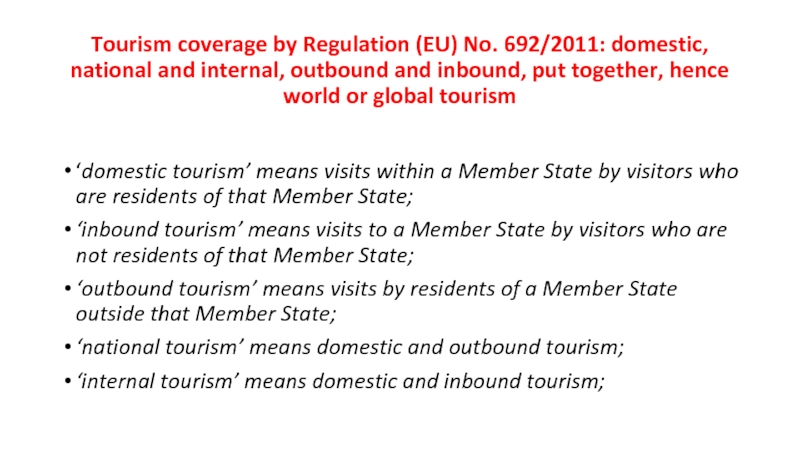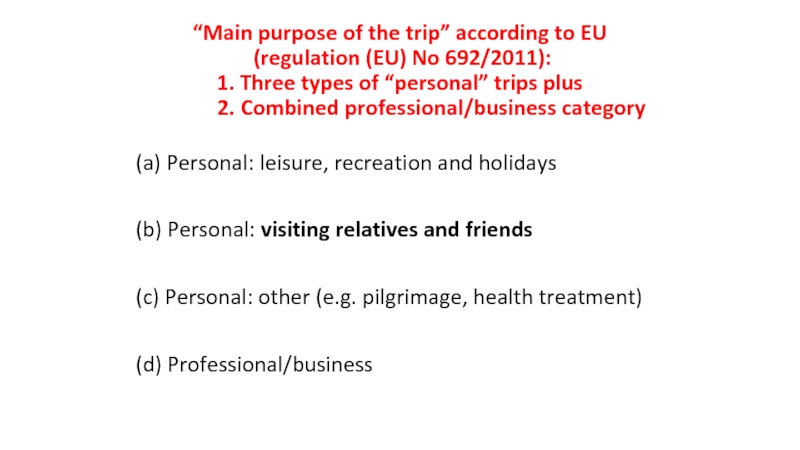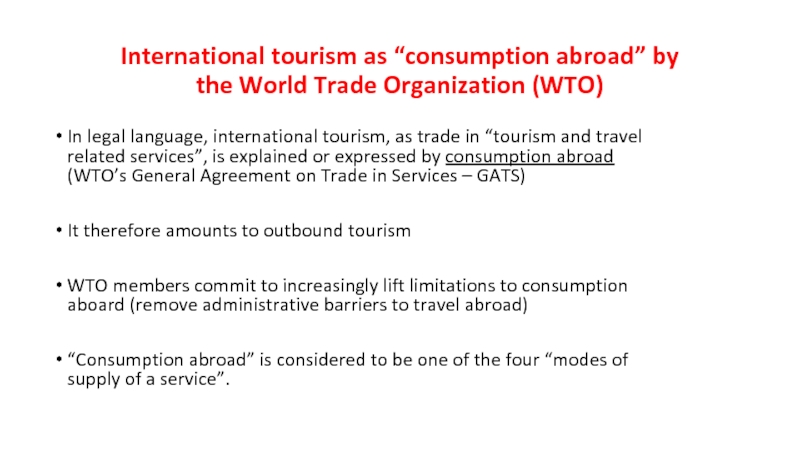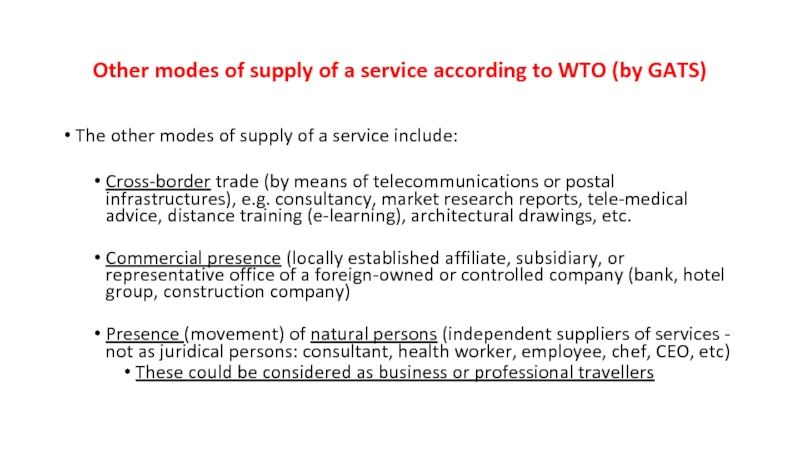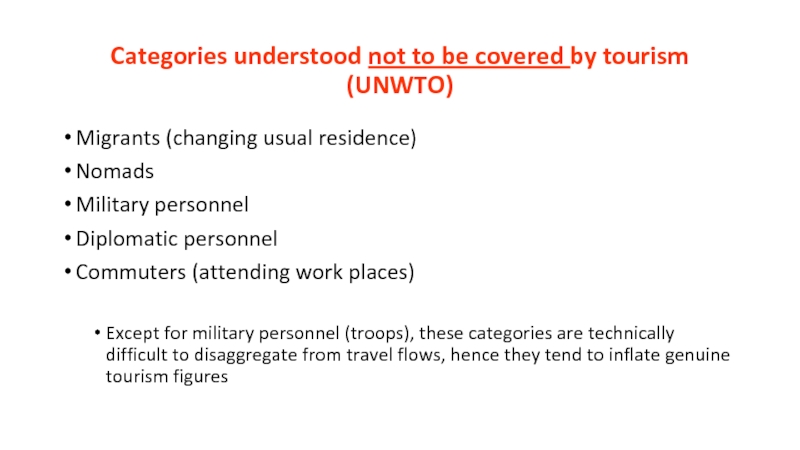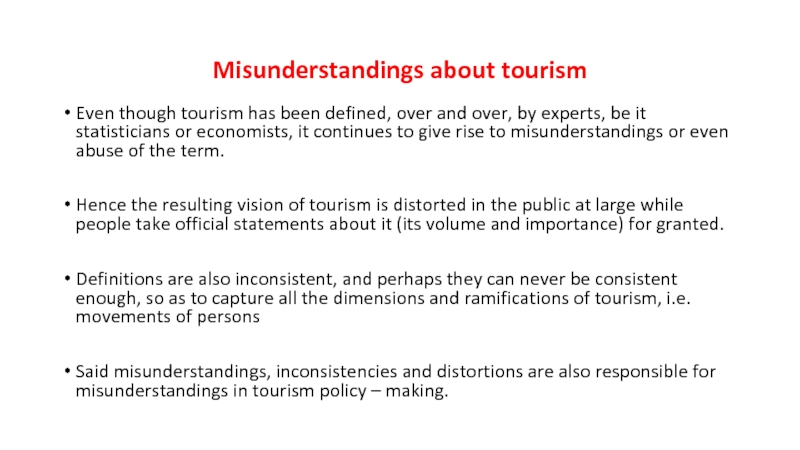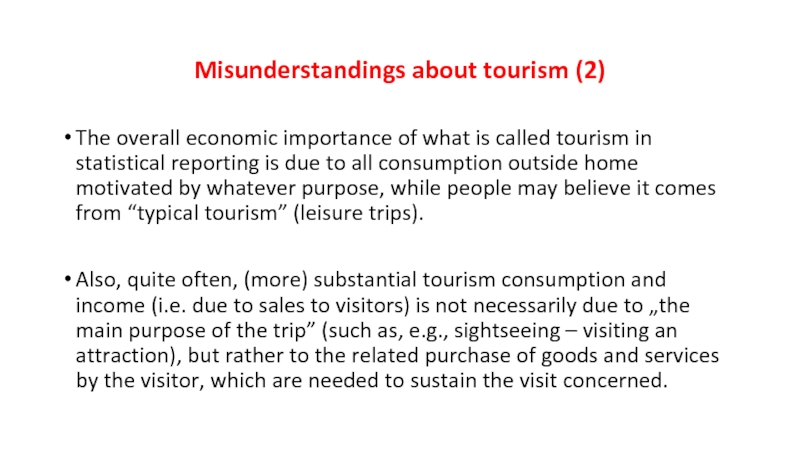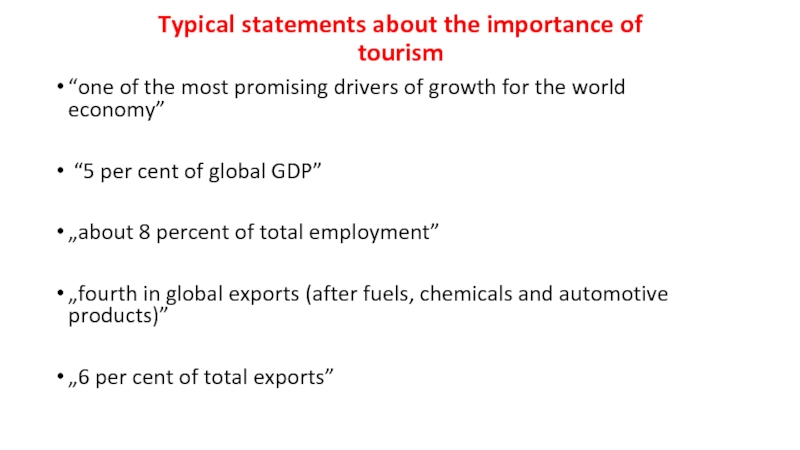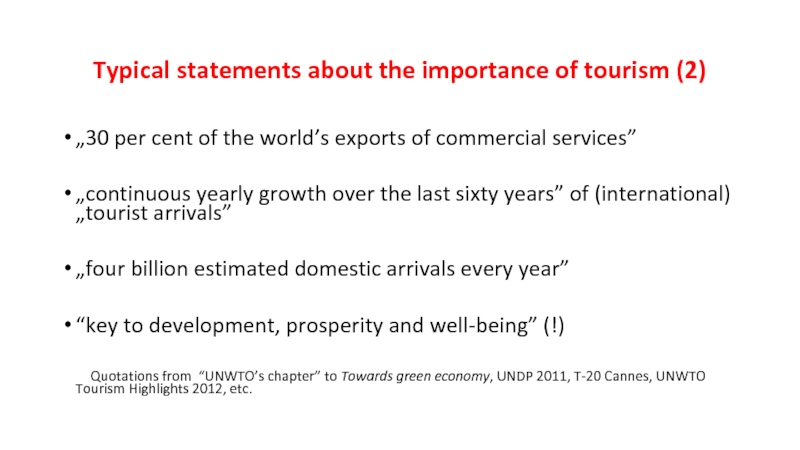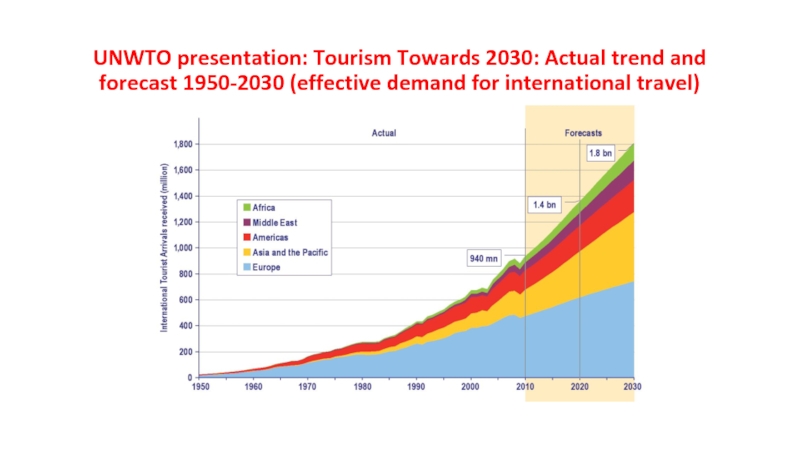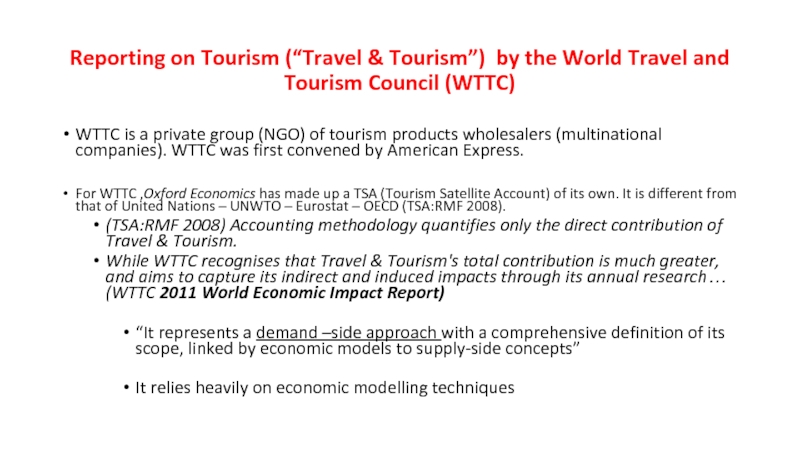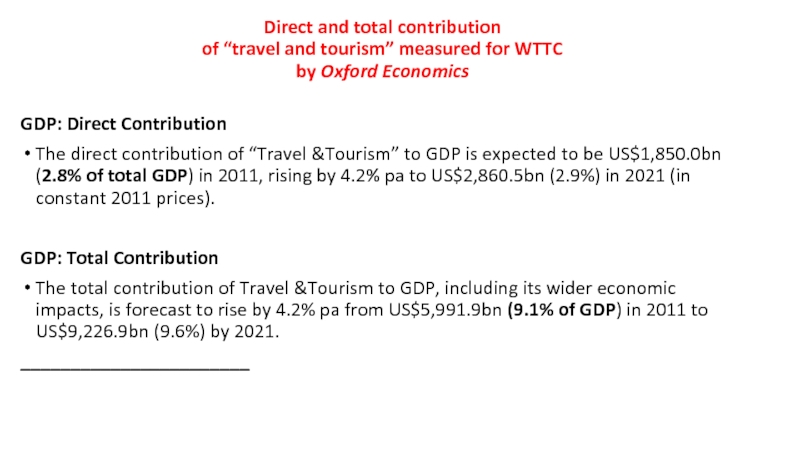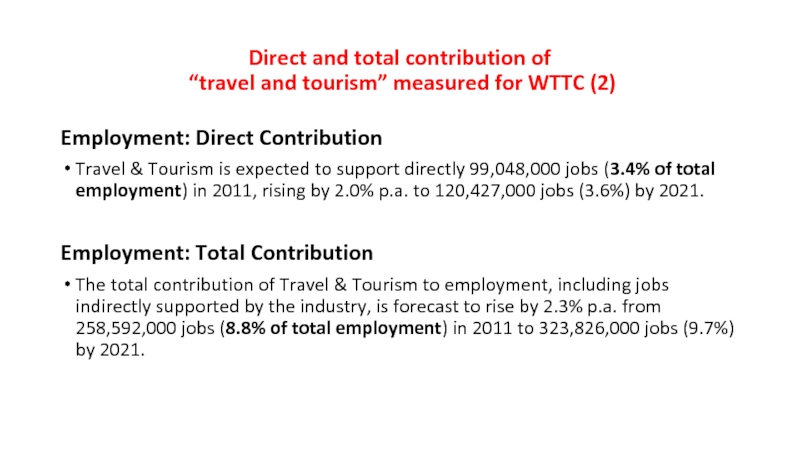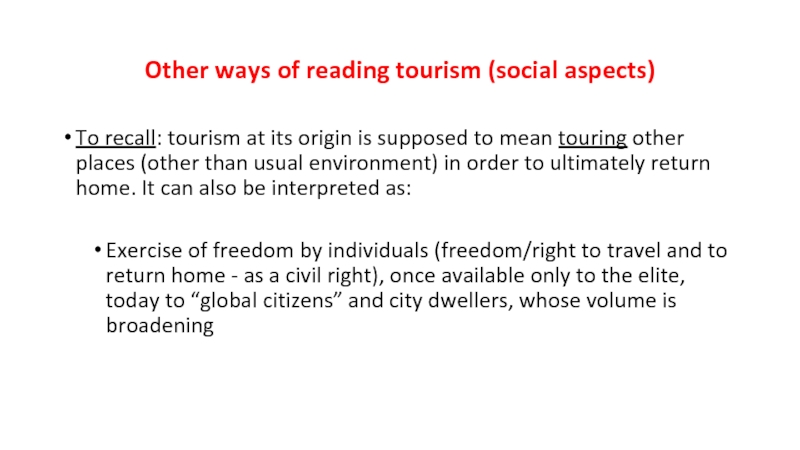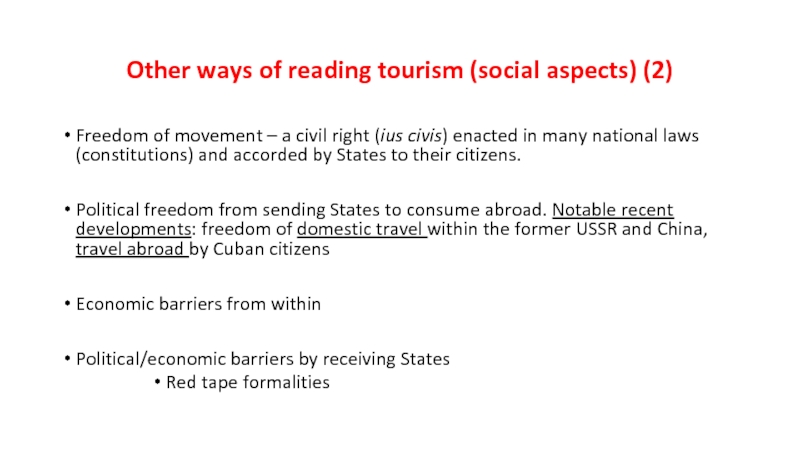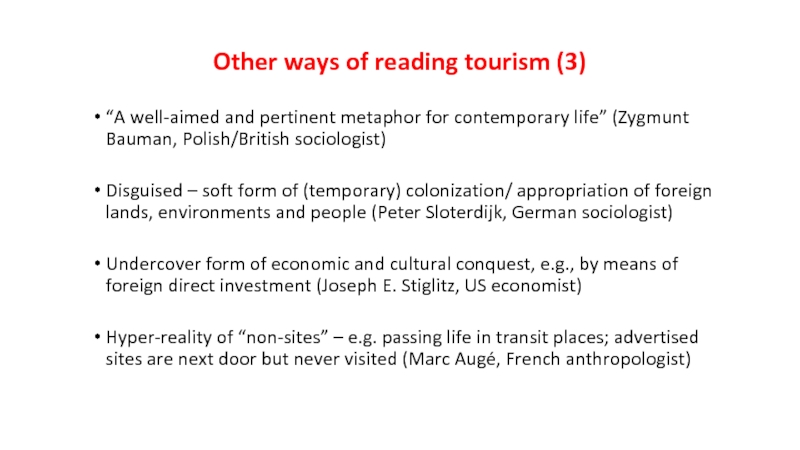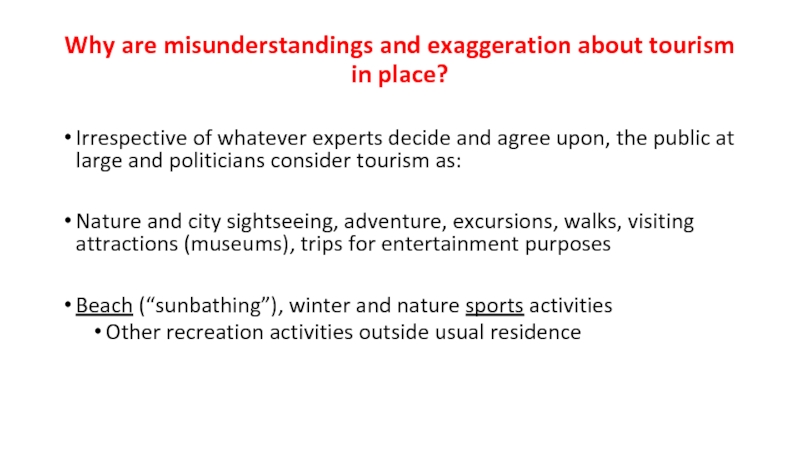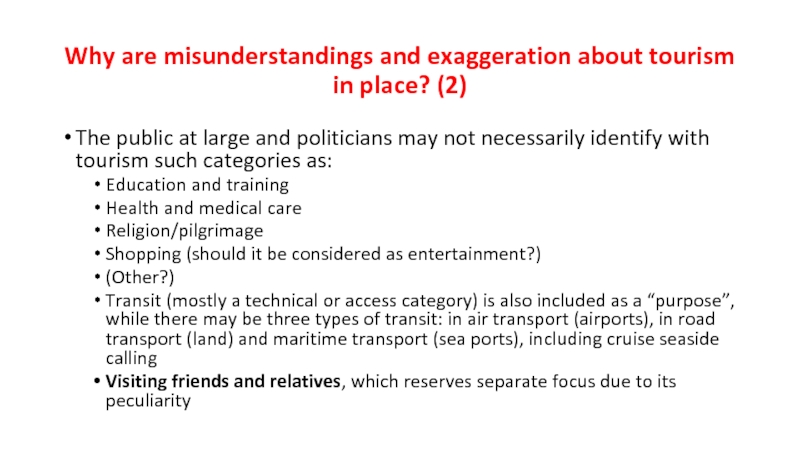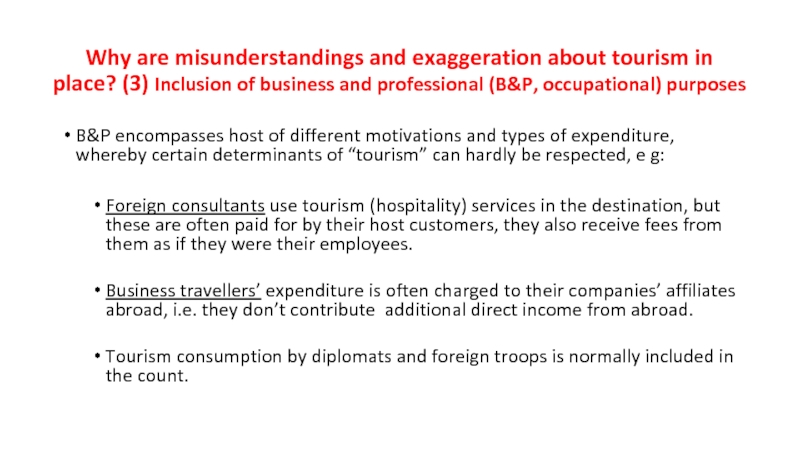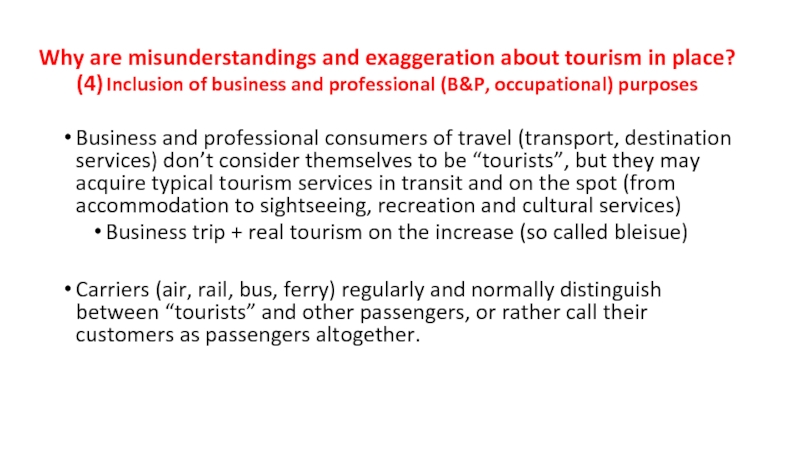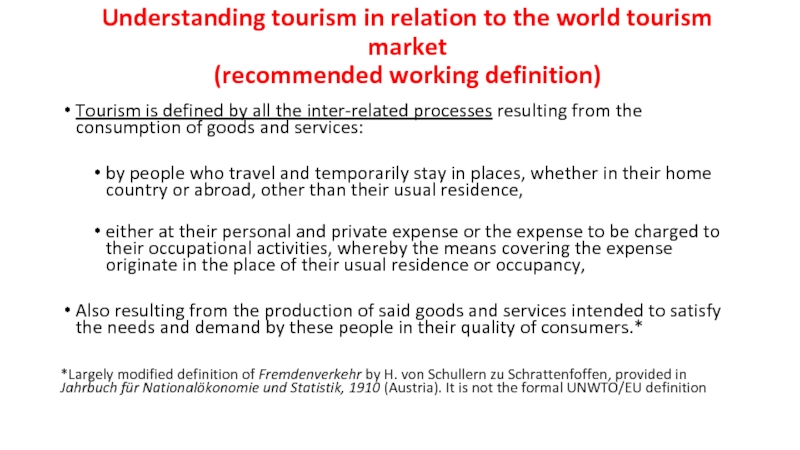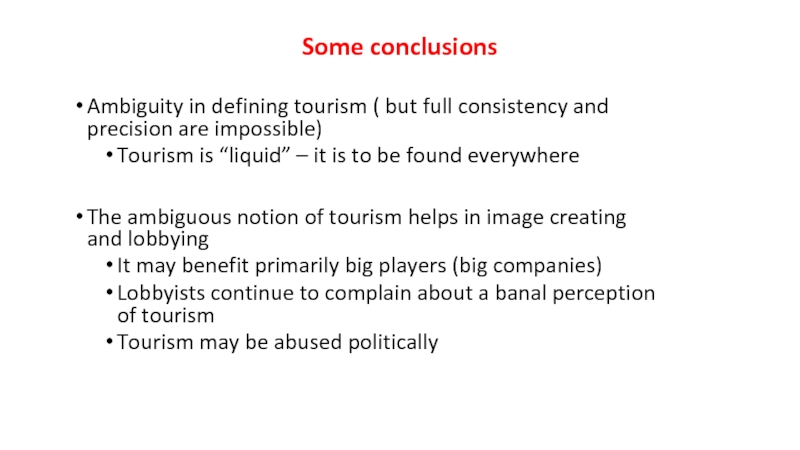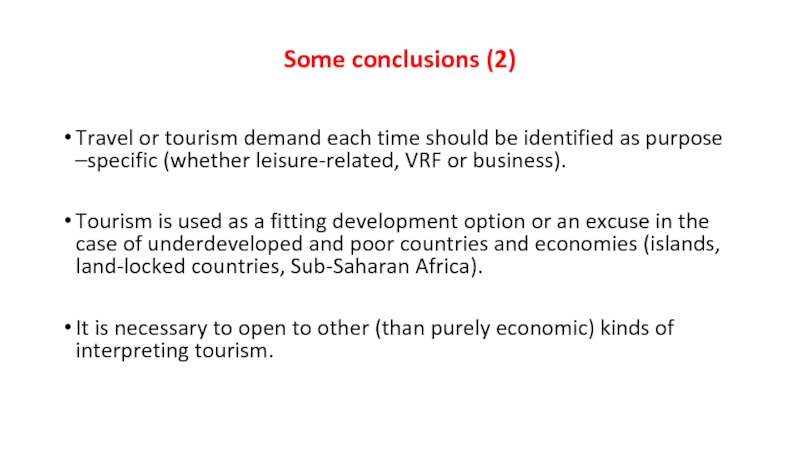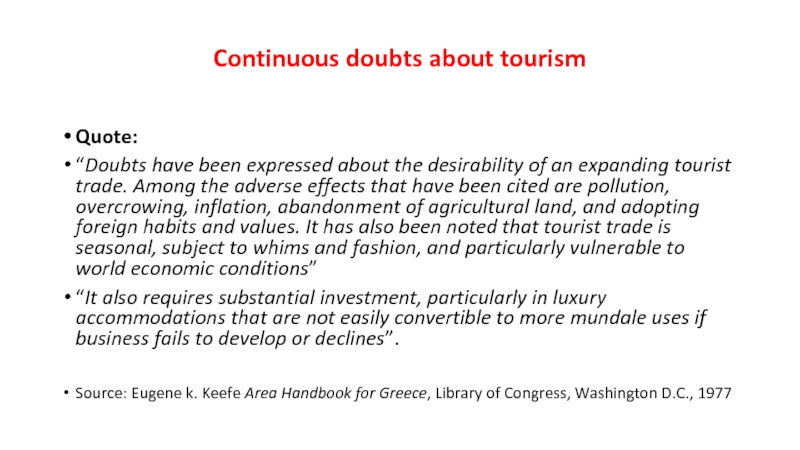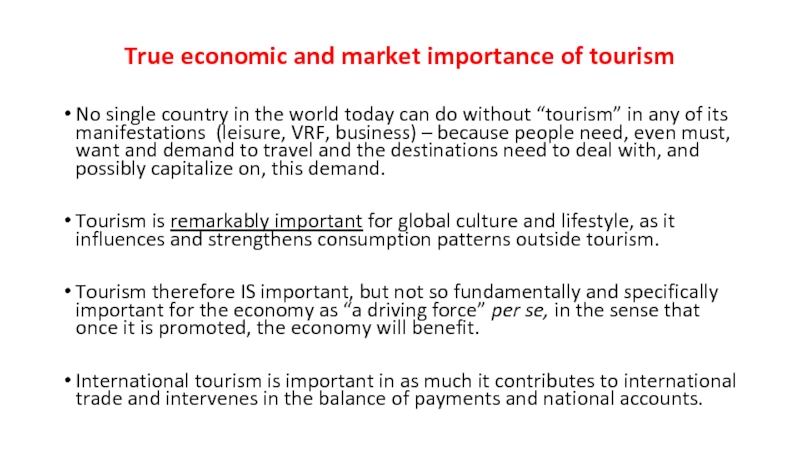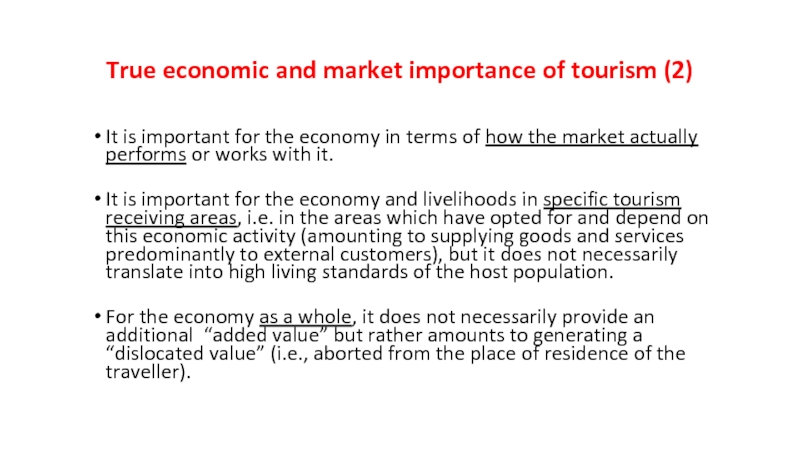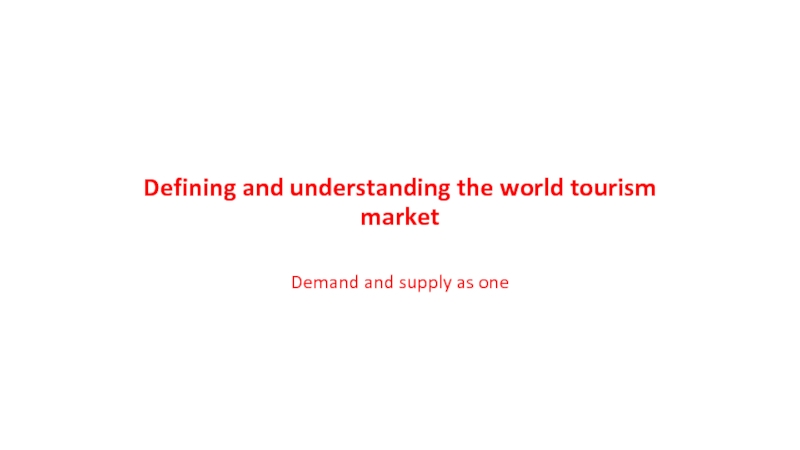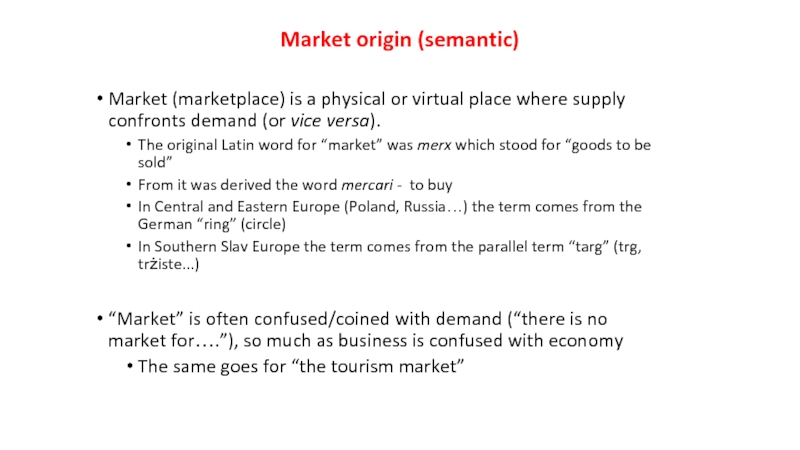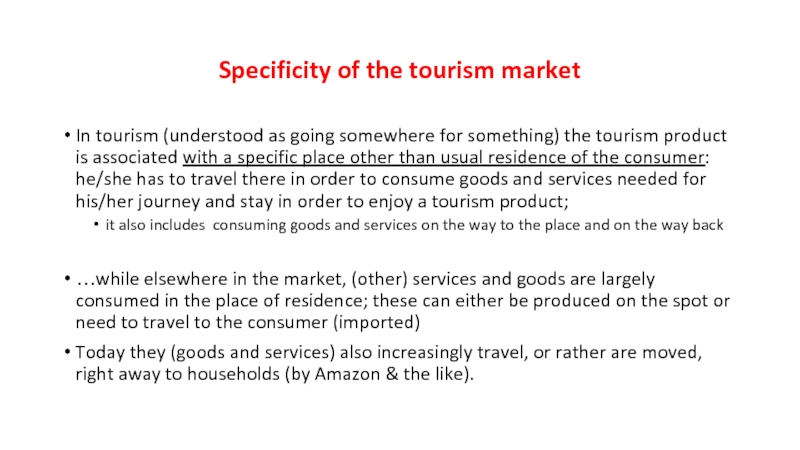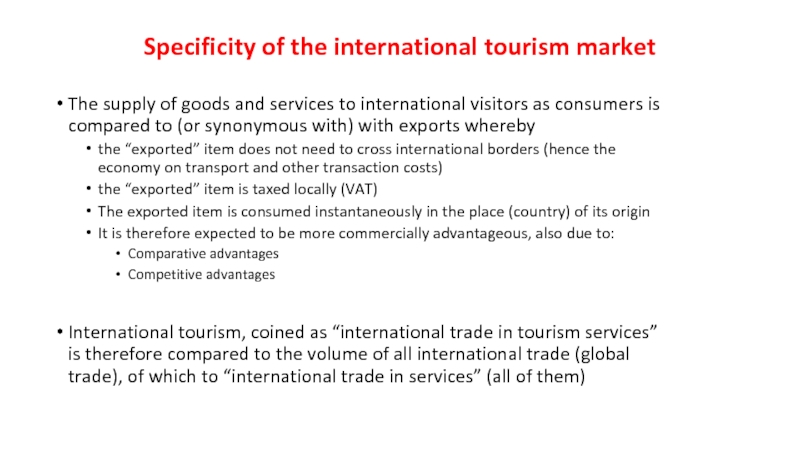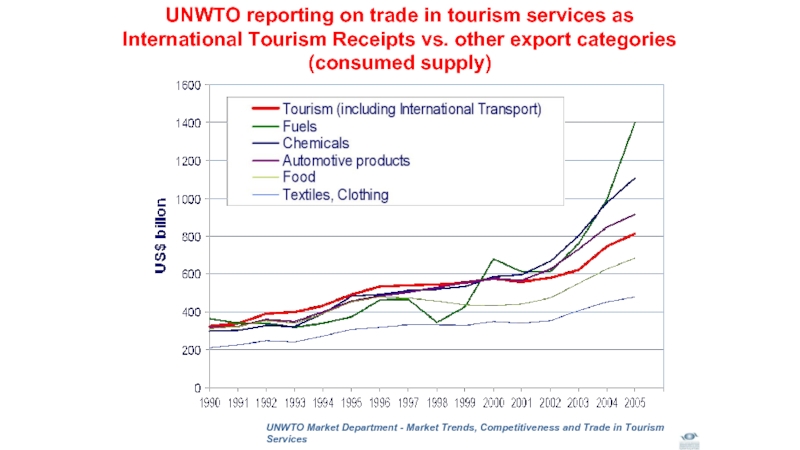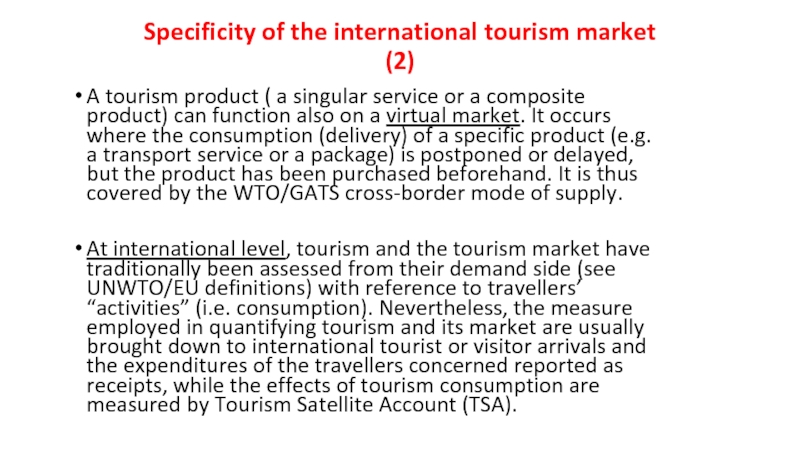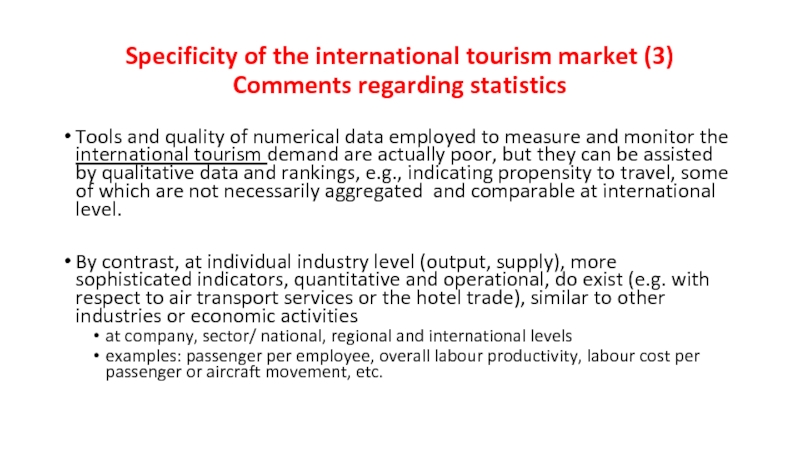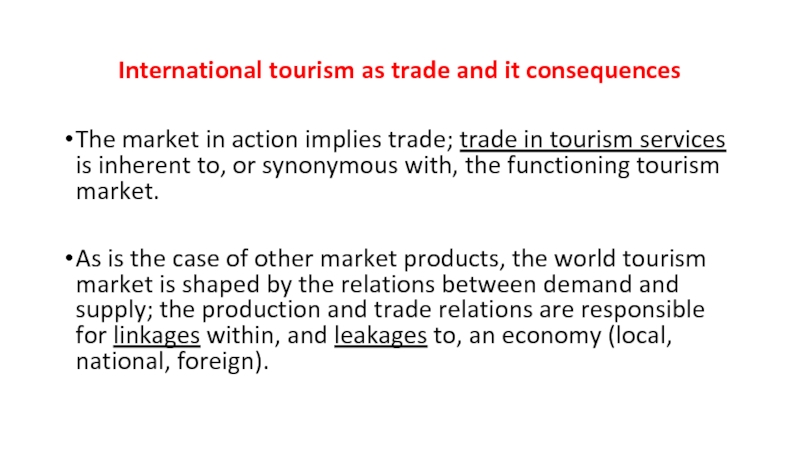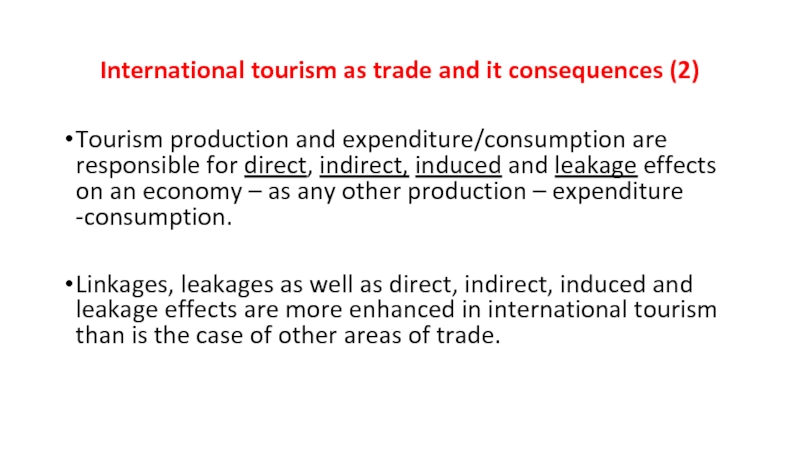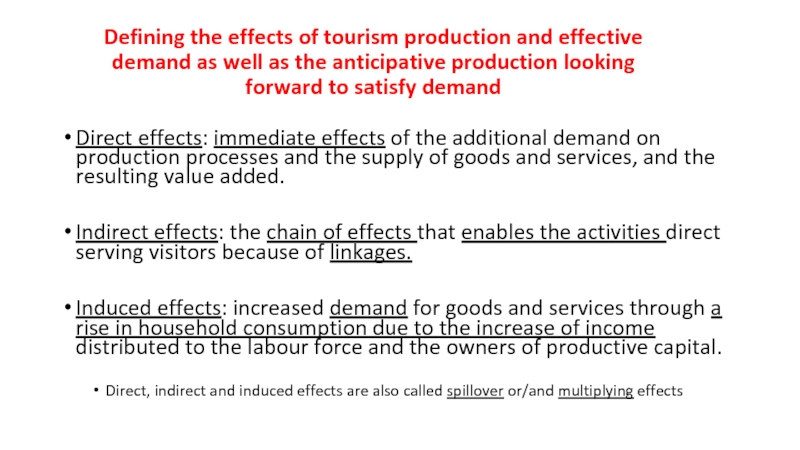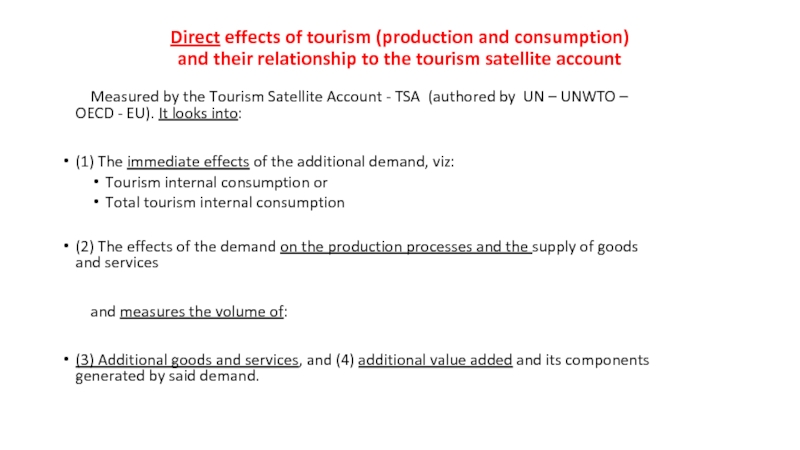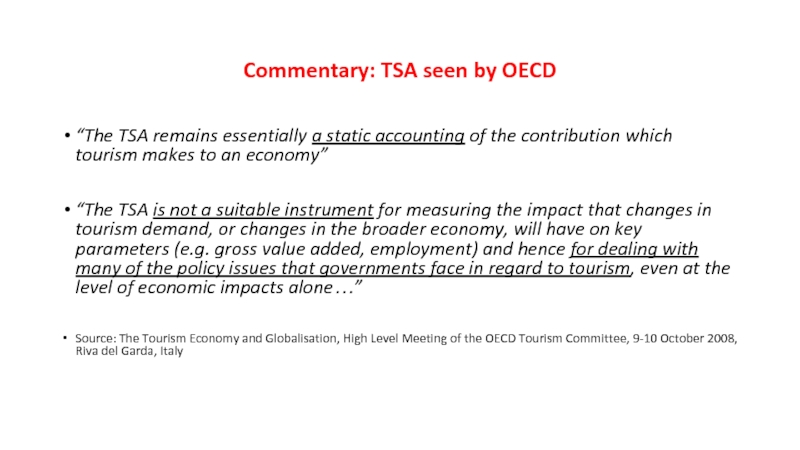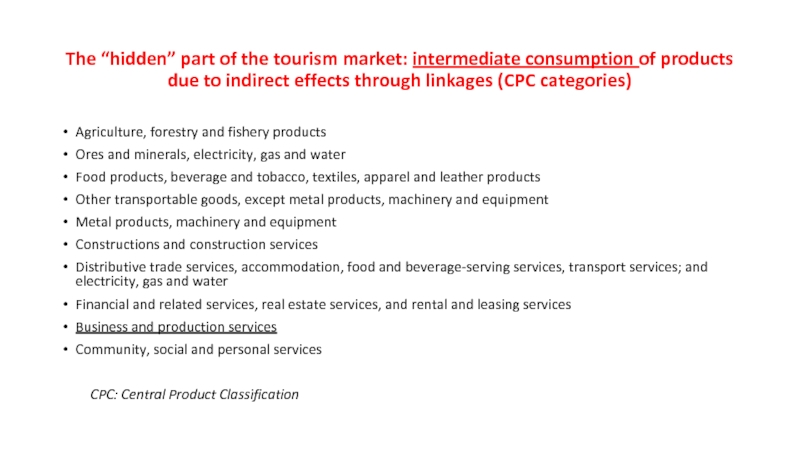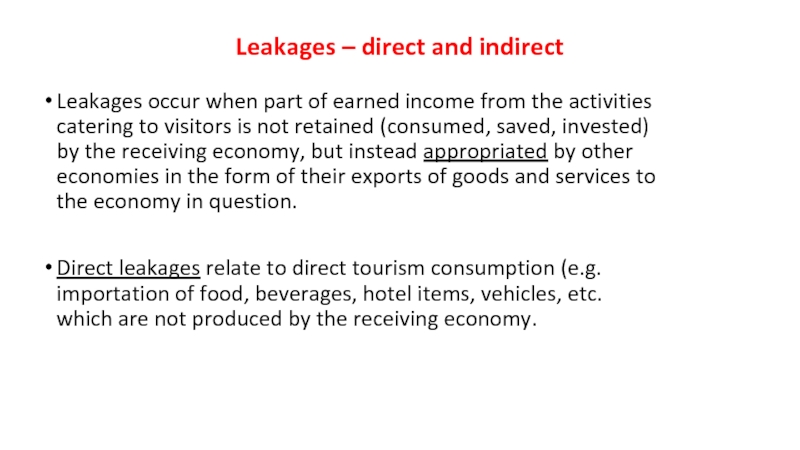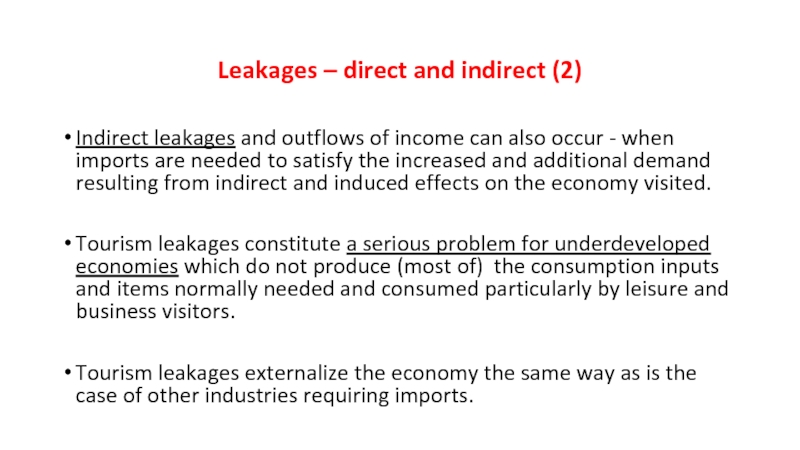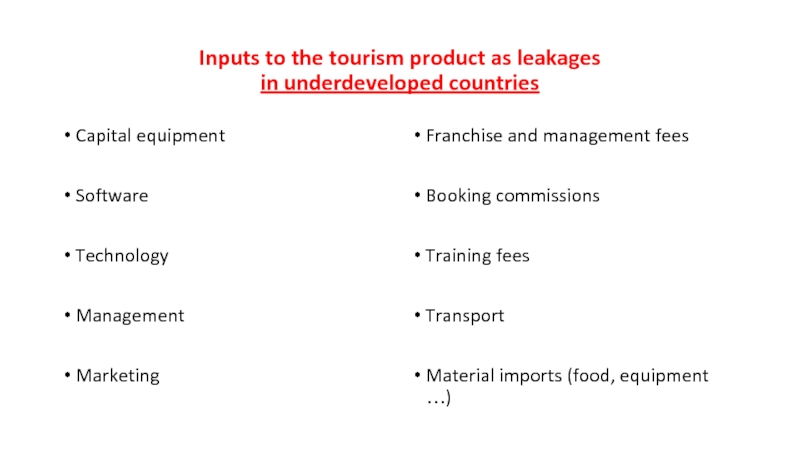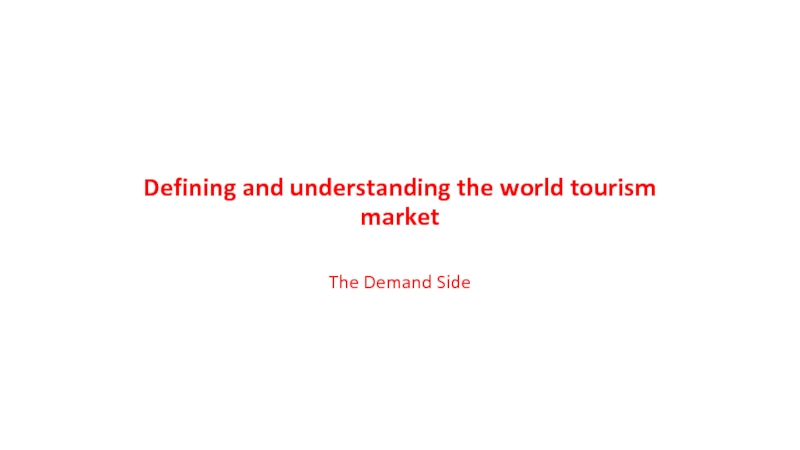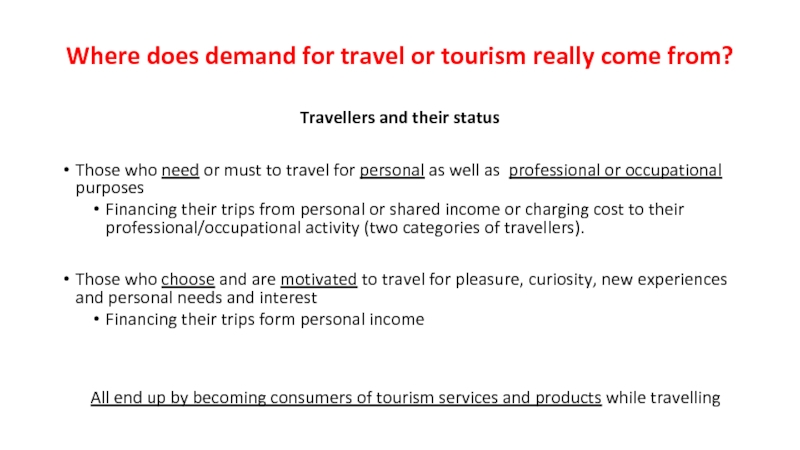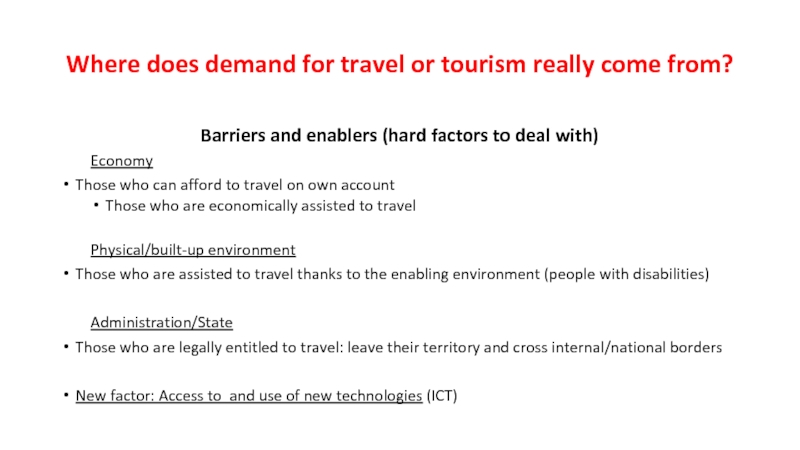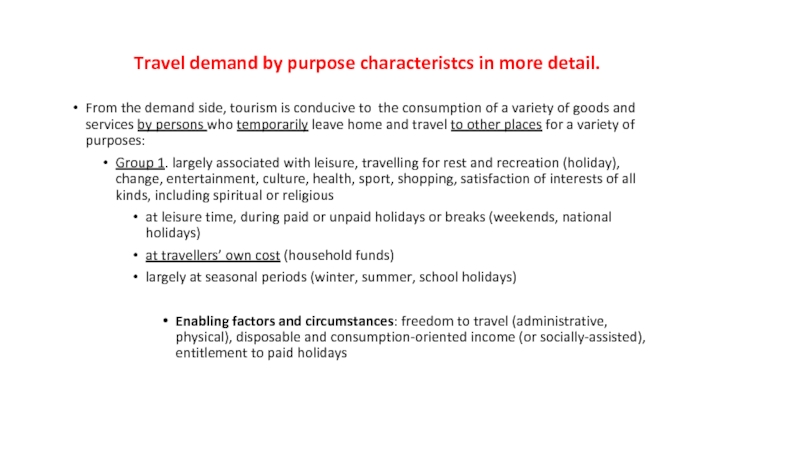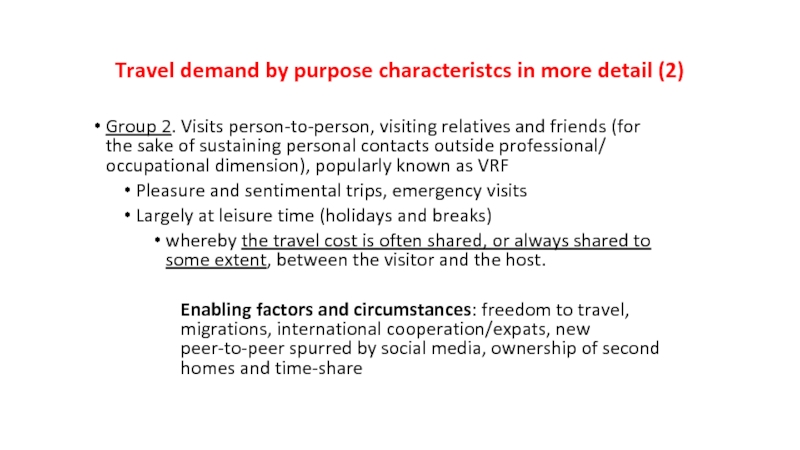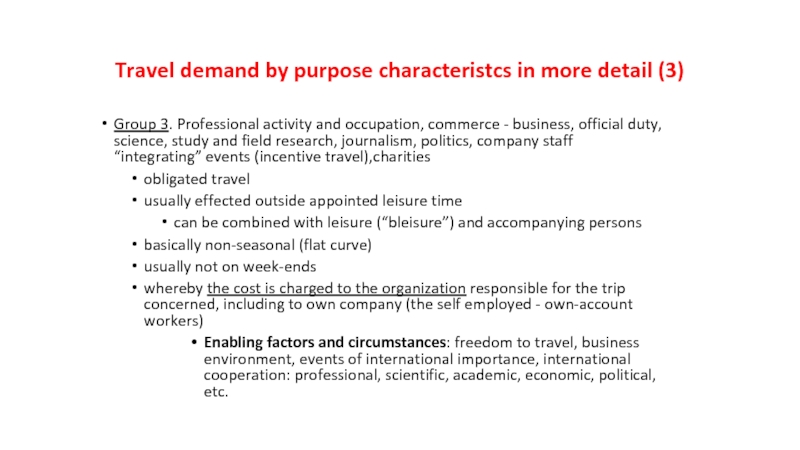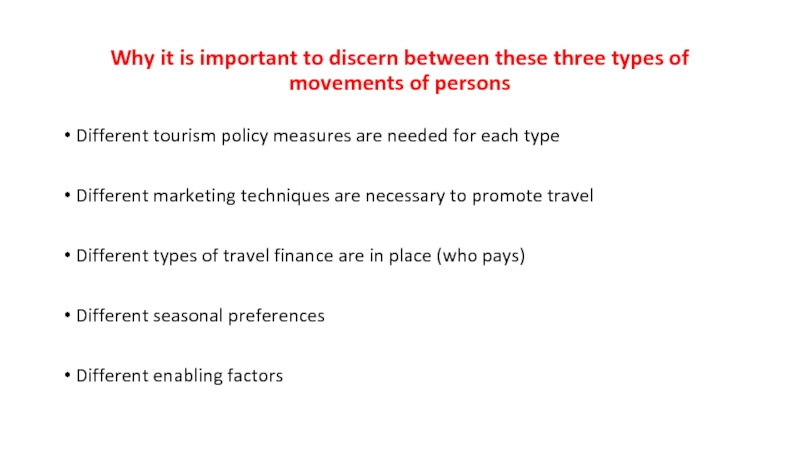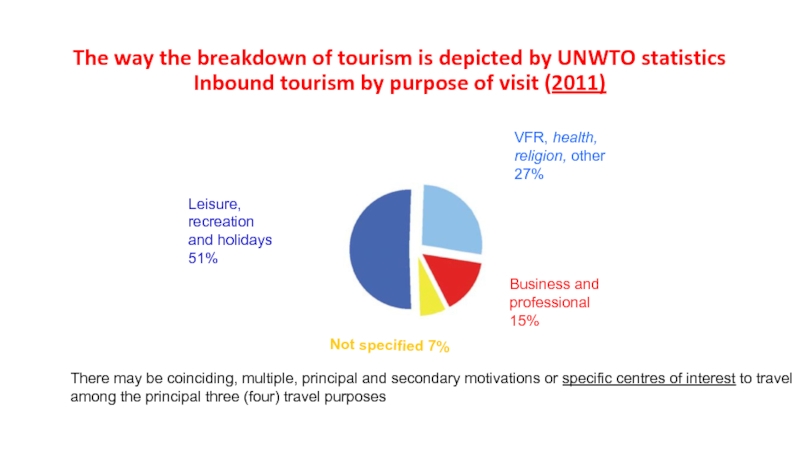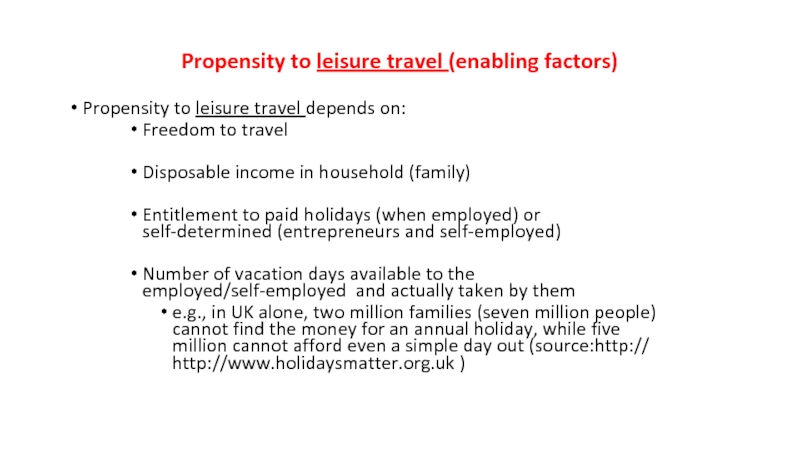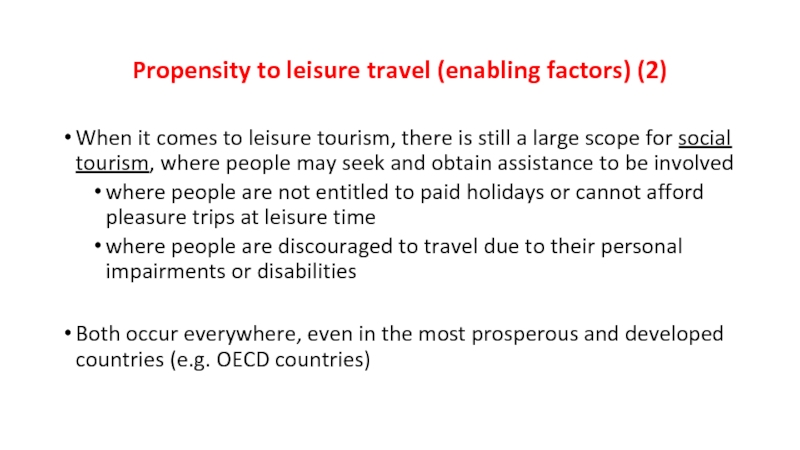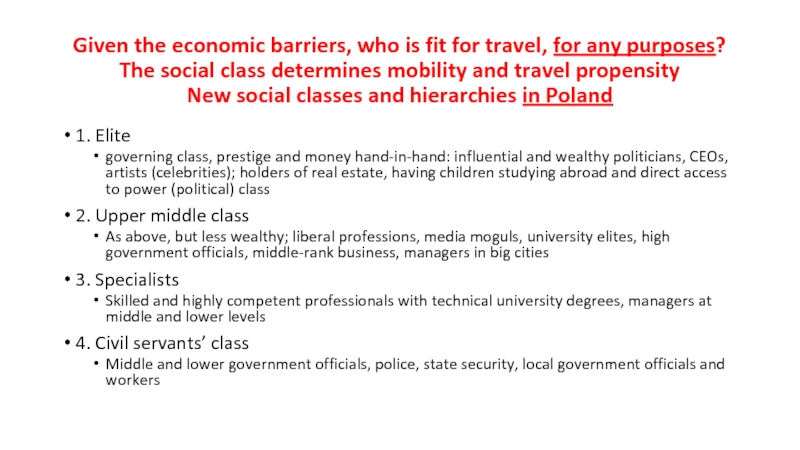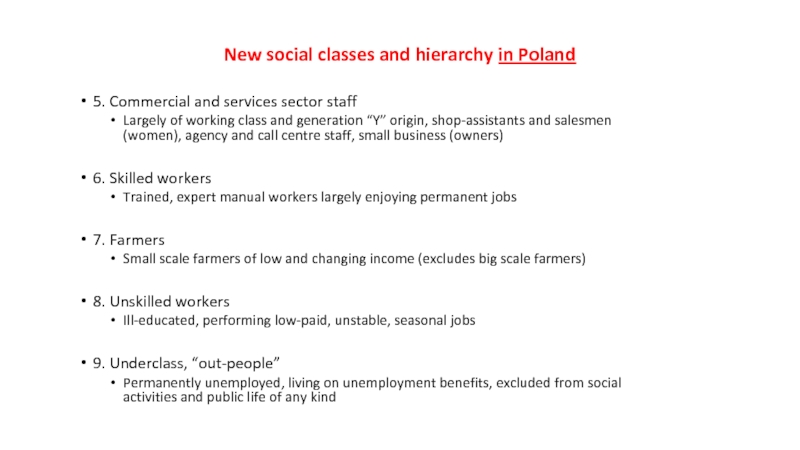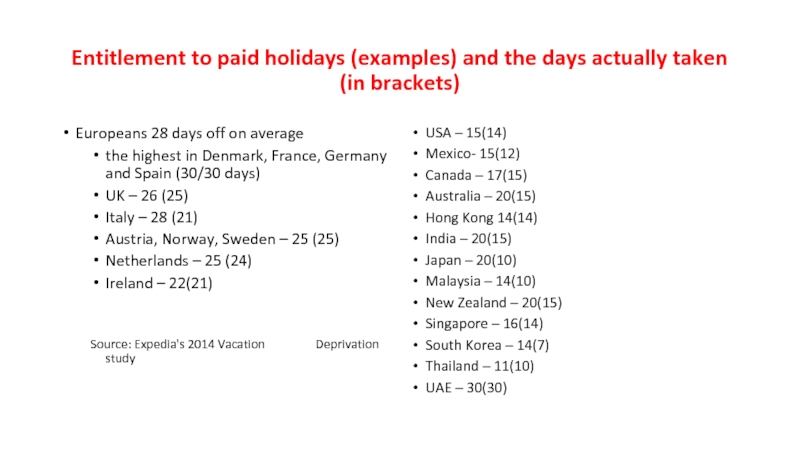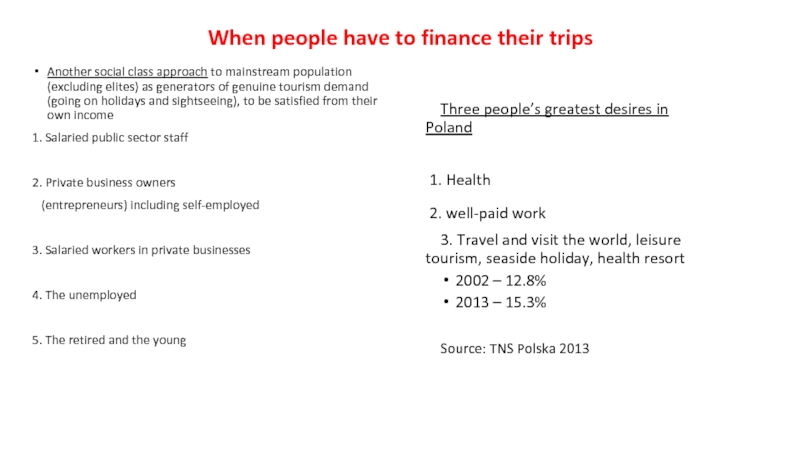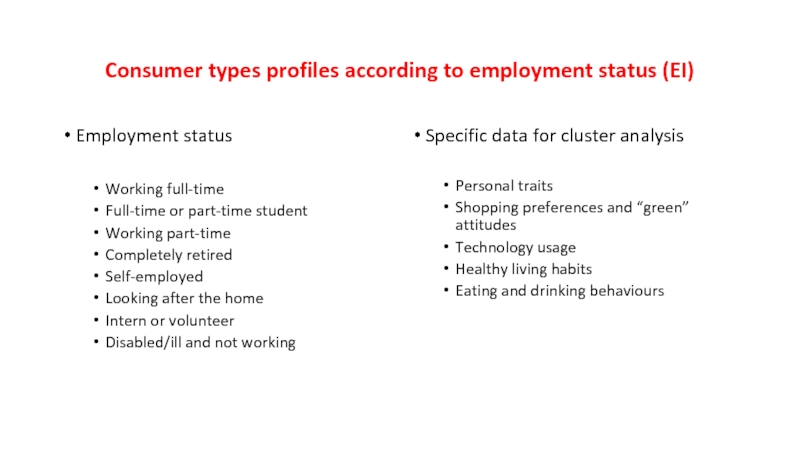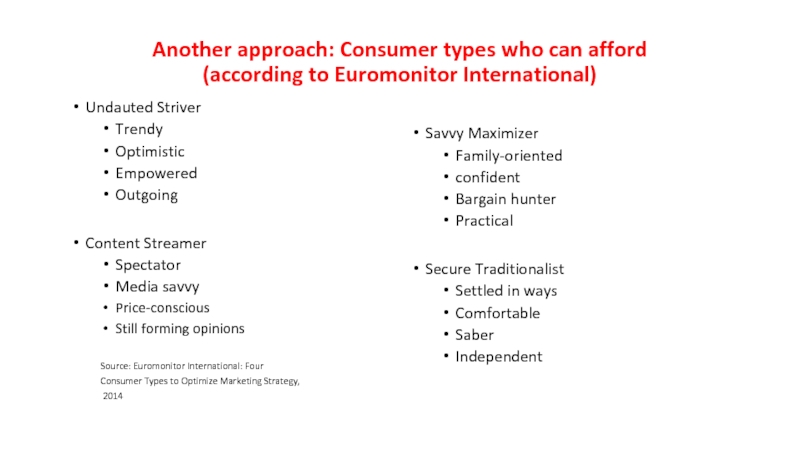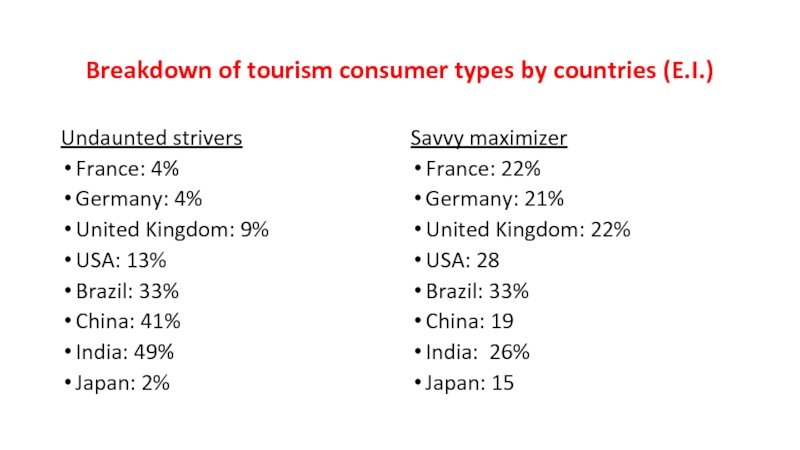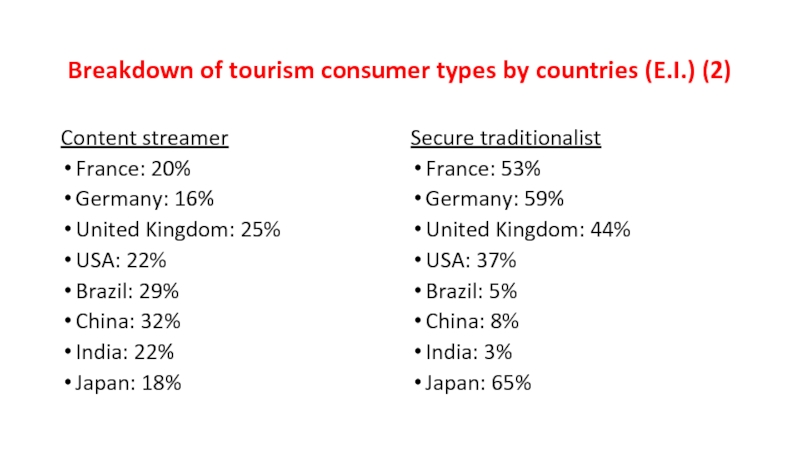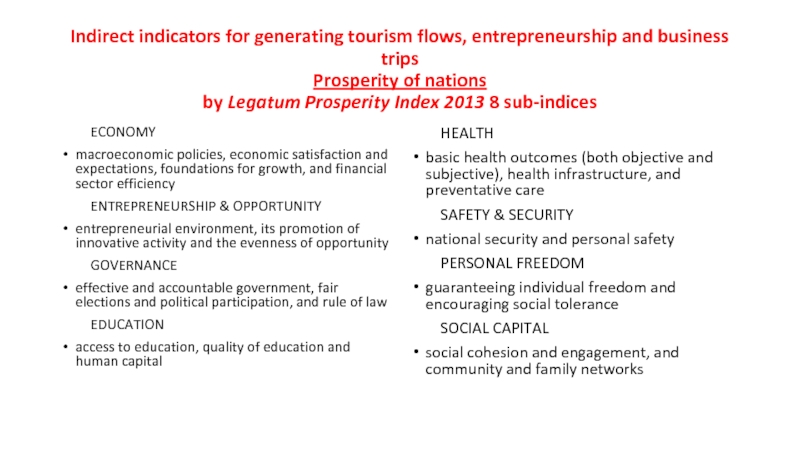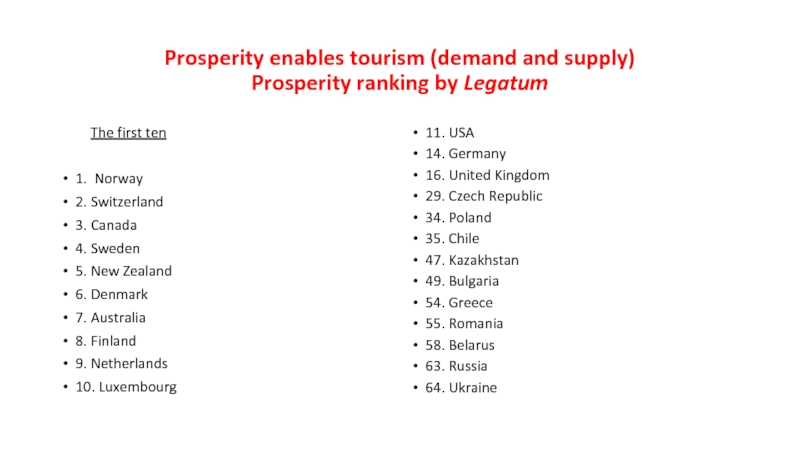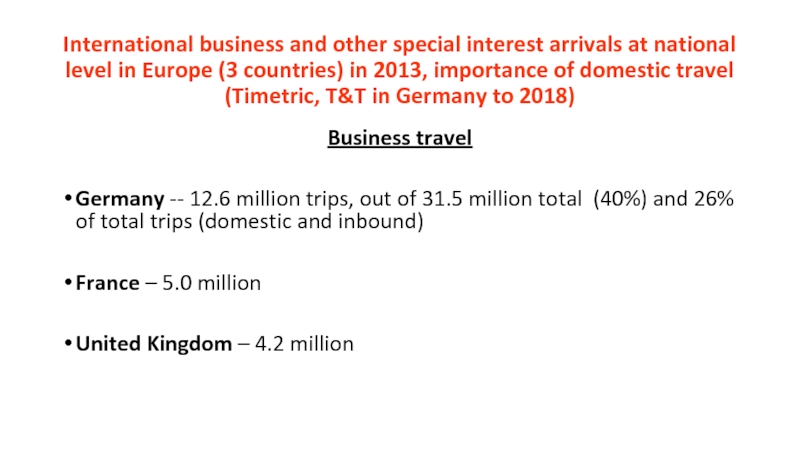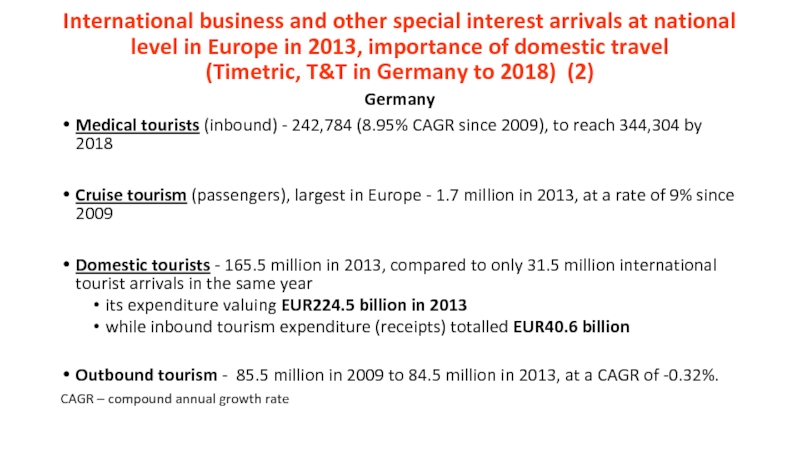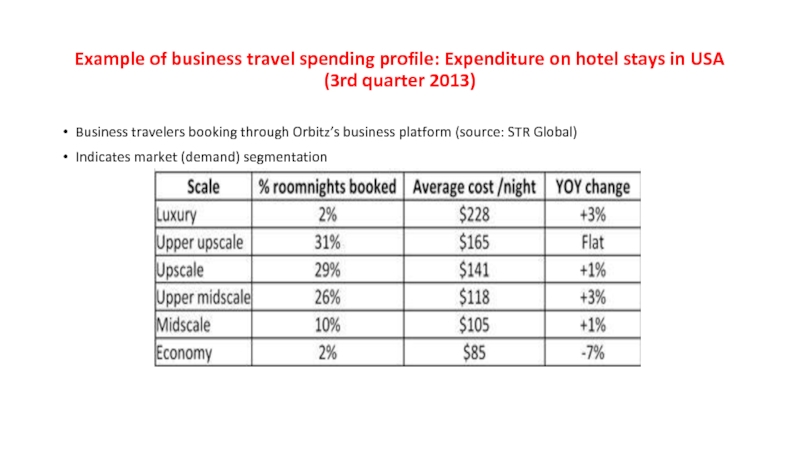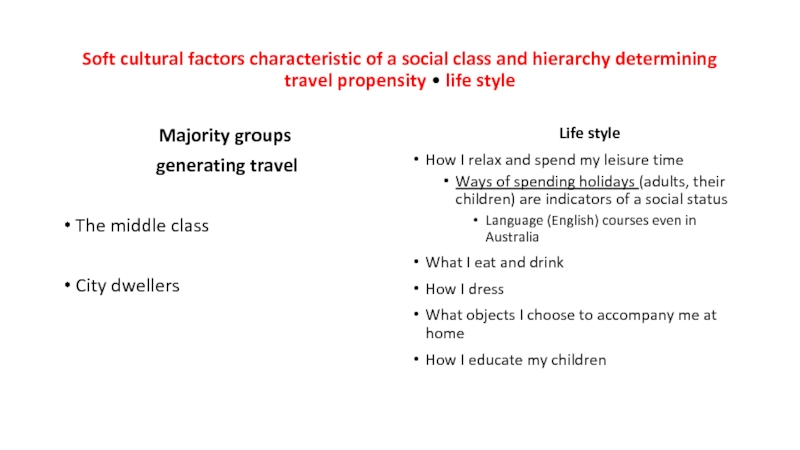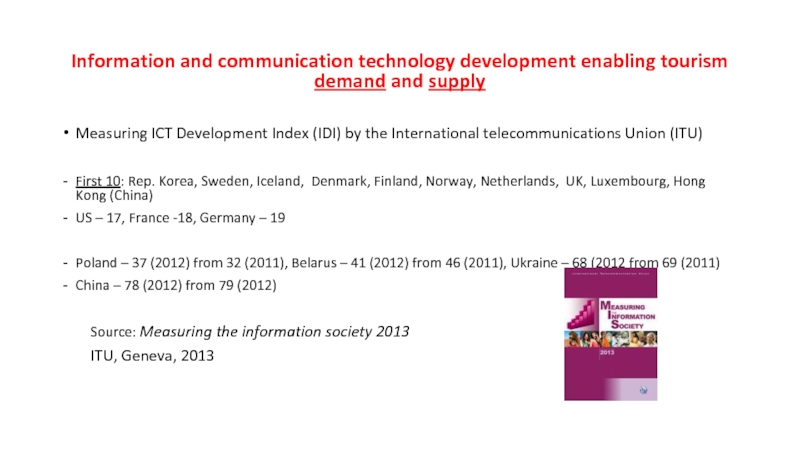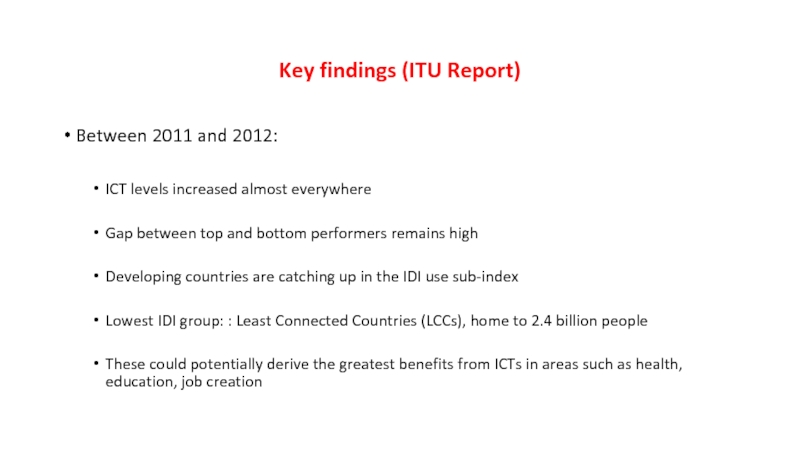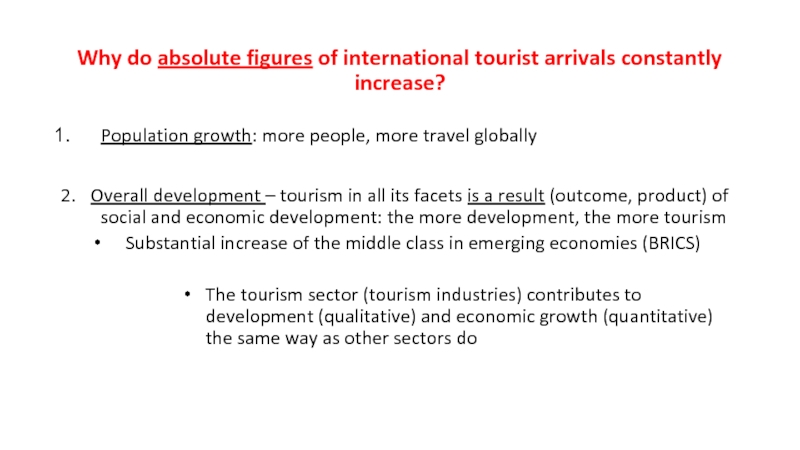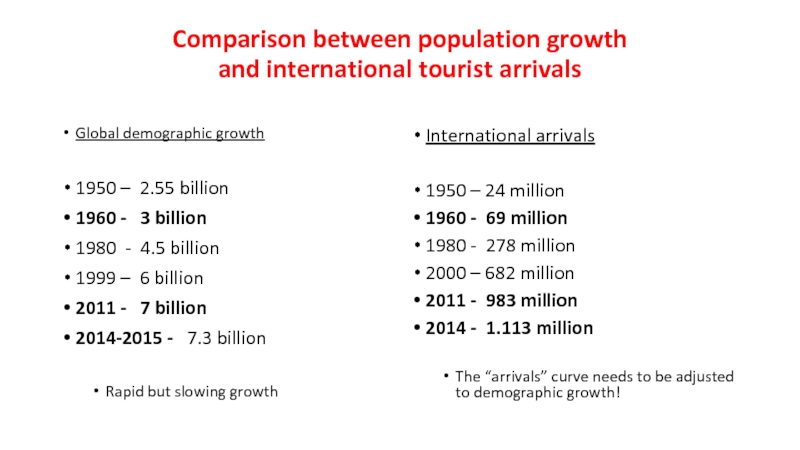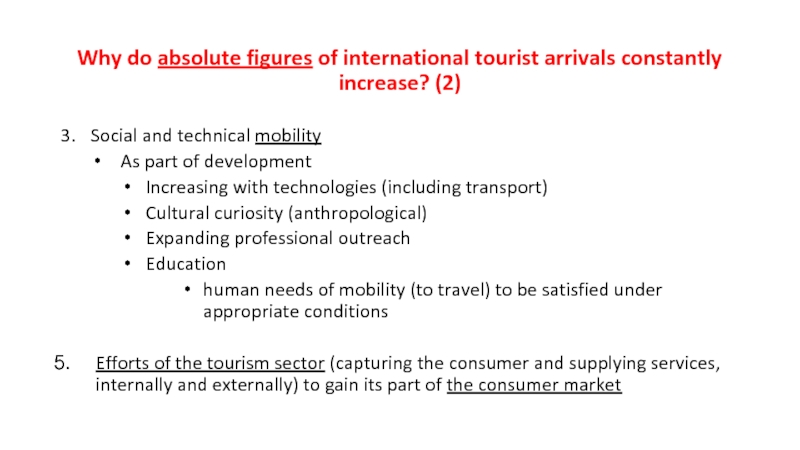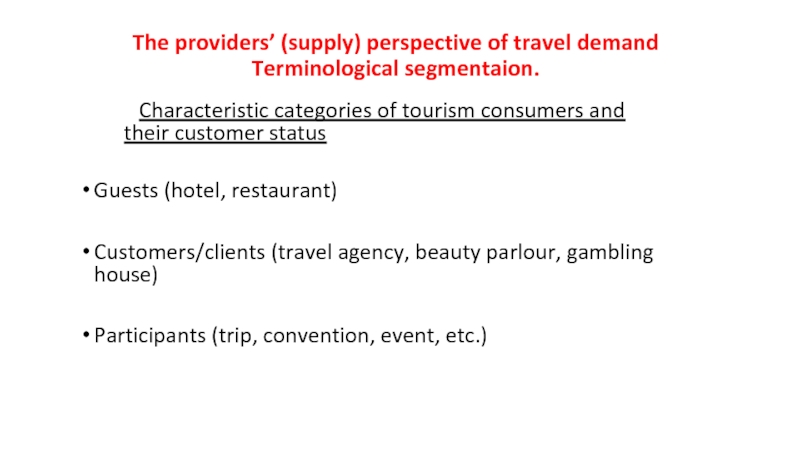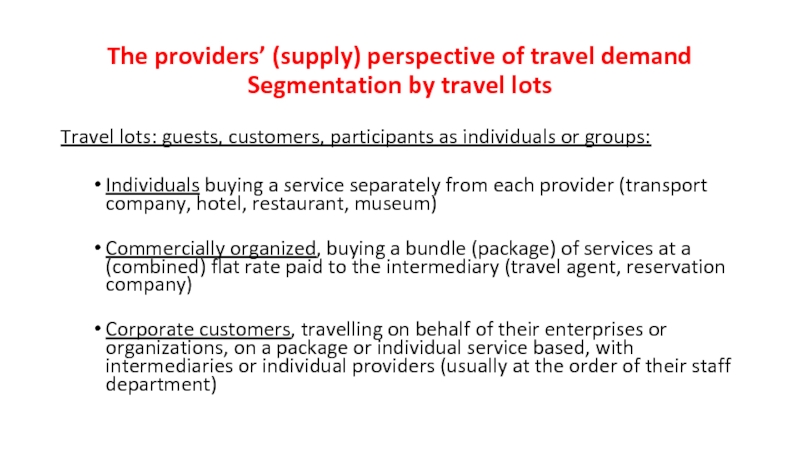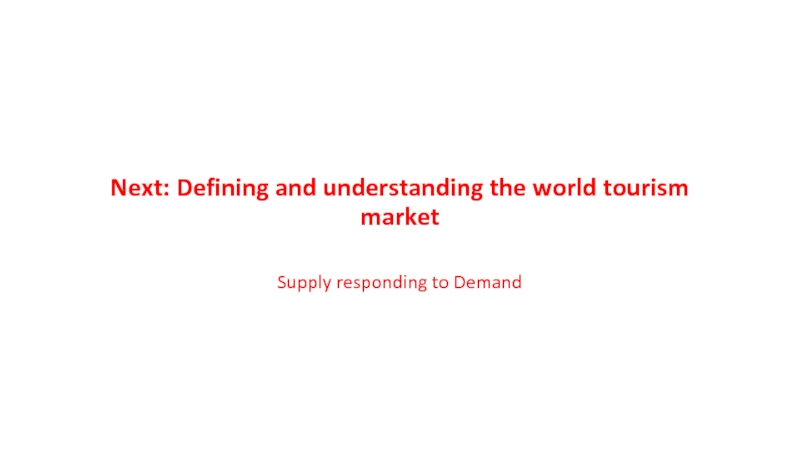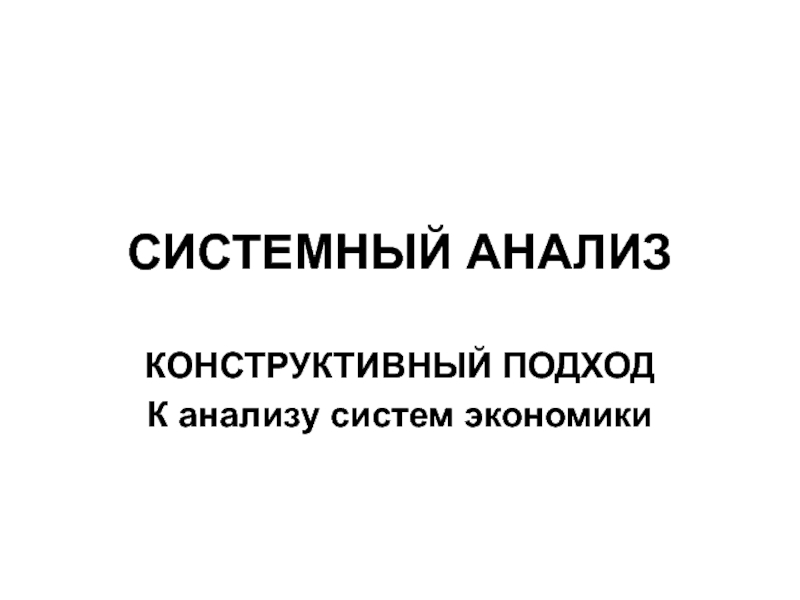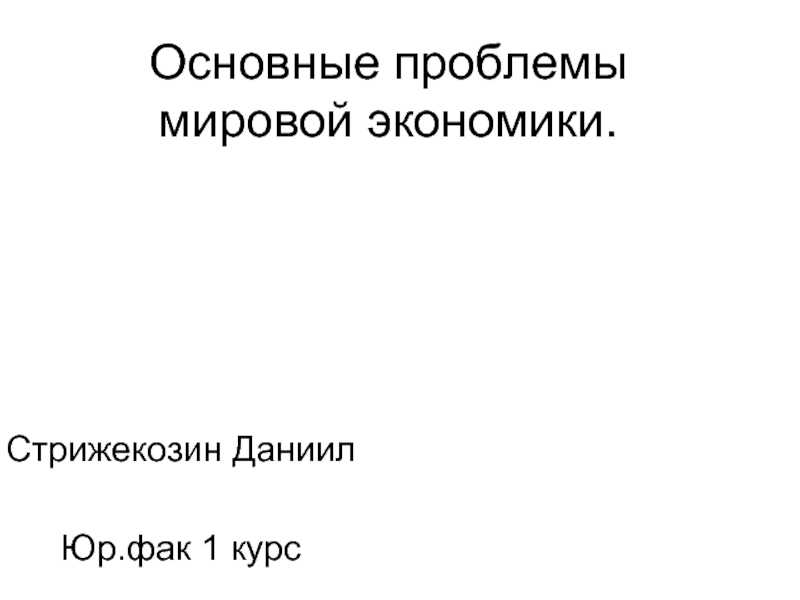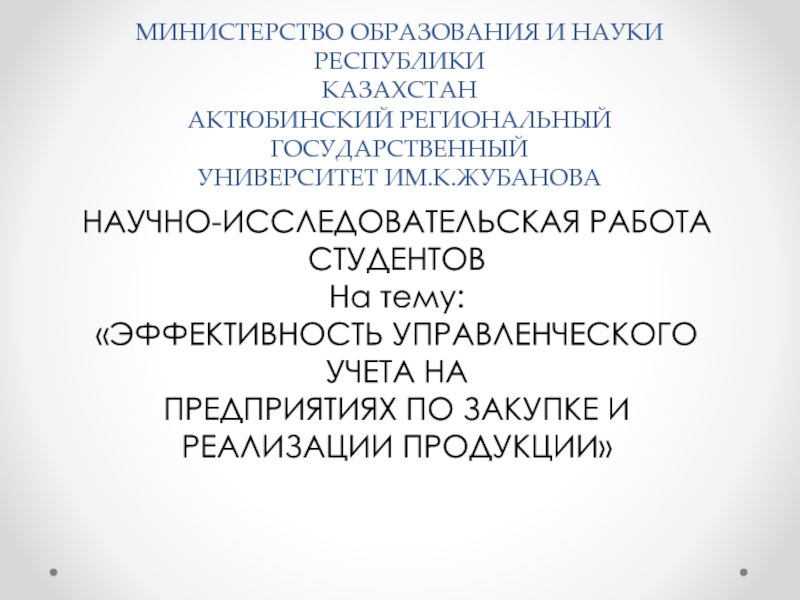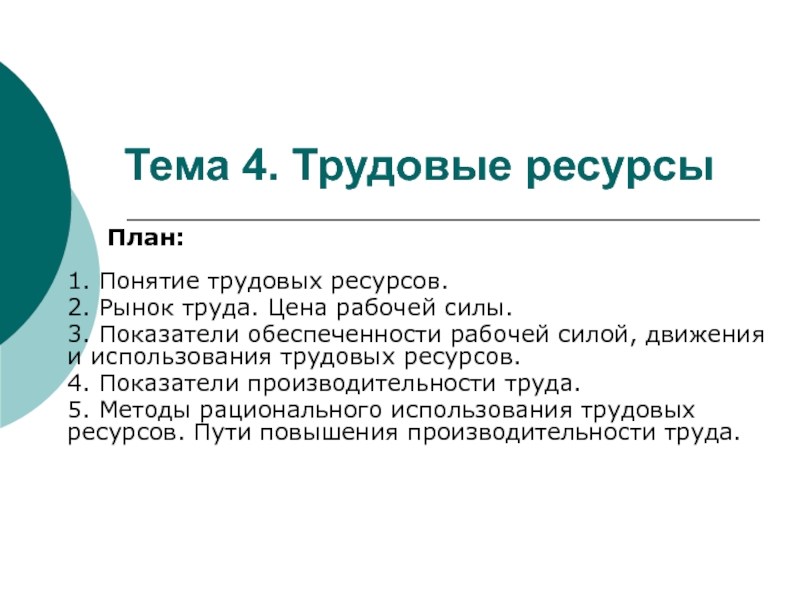Henryk F. Handszuh. M.Ec.S
Fmr. Director, Tourism Market Department, World Tourism Organization (UNWTO)
Member, UNWTO Knowledge Network
- Главная
- Разное
- Дизайн
- Бизнес и предпринимательство
- Аналитика
- Образование
- Развлечения
- Красота и здоровье
- Финансы
- Государство
- Путешествия
- Спорт
- Недвижимость
- Армия
- Графика
- Культурология
- Еда и кулинария
- Лингвистика
- Английский язык
- Астрономия
- Алгебра
- Биология
- География
- Детские презентации
- Информатика
- История
- Литература
- Маркетинг
- Математика
- Медицина
- Менеджмент
- Музыка
- МХК
- Немецкий язык
- ОБЖ
- Обществознание
- Окружающий мир
- Педагогика
- Русский язык
- Технология
- Физика
- Философия
- Химия
- Шаблоны, картинки для презентаций
- Экология
- Экономика
- Юриспруденция
World Tourism Market. Introduction to the market and international tourism презентация
Содержание
- 1. World Tourism Market. Introduction to the market and international tourism
- 2. Literature World Tourism Organization (UNWTO), www.unwto.org World
- 3. Other literature (2) European Travel Commission (ETC),
- 4. Literature (UNWTO and OECD on Internet) UNWTO
- 5. Course objective Knowledge- The student is
- 6. Course objective (2) Social competence – The
- 7. Introduction to the market and international
- 8. Explanation of concepts World tourism market represents
- 9. Tourism: what is it all about? Approaches
- 10. Which of these do we use
- 11. The term „tourist” (but not „tourism”) appearing
- 12. Definition of tourism in European Union documents
- 13. Official definitions of Tourism and their features
- 14. Definition of tourism by TSA 2008 (UN
- 15. Definition of tourism by TSA 2008 (UN
- 16. Defining and understanding tourism vs. travel and
- 17. Official definitions of Tourism and their features
- 18. First EU definition of tourism in Council
- 19. (New) definition in Regulation (EU) No. 692/2011
- 20. Tourism coverage by Regulation (EU) No. 692/2011:
- 21. “Main purpose of the trip” according to
- 22. International tourism as “consumption abroad” by
- 23. Other modes of supply of a service
- 24. Categories understood not to be covered by
- 25. Misunderstandings about tourism Even though tourism has
- 26. Misunderstandings about tourism (2) The overall economic
- 27. Typical statements about the importance of tourism
- 28. Typical statements about the importance of tourism
- 29. UNWTO presentation: Tourism Towards 2030: Actual trend and forecast 1950-2030 (effective demand for international travel)
- 30. Reporting on Tourism (“Travel & Tourism”) by
- 31. Direct and total contribution of “travel and
- 32. Direct and total contribution of “travel
- 33. Other ways of reading tourism (social aspects)
- 34. Other ways of reading tourism (social aspects)
- 35. Other ways of reading tourism (3) “A
- 36. Why are misunderstandings and exaggeration about tourism
- 37. Why are misunderstandings and exaggeration about tourism
- 38. Why are misunderstandings and exaggeration about tourism
- 39. Why are misunderstandings and exaggeration about tourism
- 40. Understanding tourism in relation to the world
- 41. Some conclusions Ambiguity in defining tourism (
- 42. Some conclusions (2) Travel or tourism
- 43. Continuous doubts about tourism Quote: “Doubts have
- 44. True economic and market importance of tourism
- 45. True economic and market importance of tourism
- 46. Defining and understanding the world tourism market Demand and supply as one
- 47. Market origin (semantic) Market (marketplace) is a
- 48. Specificity of the tourism market In tourism
- 49. Specificity of the international tourism market The
- 50. UNWTO reporting on trade in tourism services
- 51. Specificity of the international tourism market (2)
- 52. Specificity of the international tourism market (3)
- 53. International tourism as trade and it consequences
- 54. International tourism as trade and it consequences
- 55. Defining the effects of tourism production and
- 56. Direct effects of tourism (production and consumption)
- 57. Commentary: TSA seen by OECD “The TSA
- 58. The “hidden” part of the tourism market:
- 59. Leakages – direct and indirect Leakages occur
- 60. Leakages – direct and indirect (2) Indirect
- 61. Inputs to the tourism product as leakages
- 62. Defining and understanding the world tourism market The Demand Side
- 63. Where does demand for travel or tourism
- 64. Where does demand for travel or tourism
- 65. Travel demand by purpose characteristcs in more
- 66. Travel demand by purpose characteristcs in more
- 67. Travel demand by purpose characteristcs in more
- 68. Why it is important to discern between
- 69. The way the breakdown of tourism is
- 70. Propensity to leisure travel (enabling factors) Propensity
- 71. Propensity to leisure travel (enabling factors) (2)
- 72. Given the economic barriers, who is fit
- 73. New social classes and hierarchy in Poland
- 74. Entitlement to paid holidays (examples) and the
- 75. When people have to finance their trips
- 76. Consumer types profiles according to employment status
- 77. Another approach: Consumer types who can afford
- 78. Breakdown of tourism consumer types by countries
- 79. Breakdown of tourism consumer types by countries
- 80. Indirect indicators for generating tourism flows, entrepreneurship
- 81. Prosperity enables tourism (demand and supply)
- 82. International business and other special interest arrivals
- 83. International business and other special interest arrivals
- 84. Example of business travel spending profile: Expenditure
- 85. Soft cultural factors characteristic of a social
- 86. Information and communication technology development
- 87. Key findings (ITU Report) Between 2011 and
- 88. Why do absolute figures of international tourist
- 89. Comparison between population growth and international
- 90. Why do absolute figures of international tourist
- 91. The providers’ (supply) perspective of travel demand
- 92. The providers’ (supply) perspective of travel demand
- 93. Next: Defining and understanding the world tourism market Supply responding to Demand
Слайд 1 World Tourism Market Winter semester 2017 TR-B5SE/1 Introduction to the market and international tourism.
Слайд 2Literature
World Tourism Organization (UNWTO), www.unwto.org
World Travel and Tourism Council (WTTC), www.wttc.org
Organisation
United Nations Educational, Scientific and Cultural Organization (UNESCO) en.UNESCO.org, fr.UNESCO.org, es.UNESCO.org, ru.UNESCO.org
European Commission – European Union, europa.eu/european-union/index_en
Cooper C., Fletcher J., Wanhill S., Gilbert D., Fuayl A. Tourism: principles and practice, Prentice Hall, Harlow, 2005
Goeldner C., Ritchie J., ”Tourism Principles, Practices, Philosophies”, John Wiley & Sons, 2006
Reisinger Y., D. Dimanche,”International Tourism. Cultures and Behaviour” Elsevier, 2009
Clavé S. A., “ The Global Theme Park Industry”, 2007, www.cabi.org
EcoTrans/European Communities,” Innovation in tourism. How to create a tourism learning area” (The handbook), Luxembourg, 2006
Слайд 3Other literature (2)
European Travel Commission (ETC), www.etc-corporate.org
Caribbean Hotel and Tourism Association
Pacific Asia Travel Association (PATA), www.pata.org
Instytut Turystyki www.intur.com.pl
Polish Tourist Organization/Polska Organizacja Turystyczna, www.pot.pl
Слайд 4Literature (UNWTO and OECD on Internet)
UNWTO – ETC: Handbook on Tourism
UNWTO – ETC: Handbook on Tourism Product Development, Madrid, 2011
UNWTO – Policy and Practice for Global Tourism, Madrid, 2011
UNWTO - WYSE Travel Confederation, The power of youth travel, Madrid (internet)
UNWTO: Global Report on Aviation, Madrid 2012 (internet)
UNWTO – Cyprus Tourism Organisation: Local Food & Tourism International Conference, Madrid, 2003
UNWTO, Global Report on Food Tourism, Madrid 2012 (internet)
UNWTO, Global Report on City Tourism, Madrid 2012 (internet)
UNWTO: Tourism Stories – How tourism enriched my life, Madrid 2013 (internet)
UNWTO: The Impact of Visa Facilitation in APEC Economies, Madrid, 2012
OECD: Innovation and Growth in Tourism, Paris, 2006
OECD: Competition Assesment Toolkit Paris, 2007
Слайд 5Course objective
Knowledge- The student is aware of, puts on record, and
Skills – The student is able to analyze the tourism market terms of reference in question with a view to evaluating its development potential, problems and opportunities
Слайд 6Course objective (2)
Social competence – The student is able:
(1) to clarify
(2) to understand the need of active policies, good governance and lifelong learning in the field of tourism, as well as
(3) the need of integrating an array of societal actors, disciplines and professional stakeholders required for a satisfactory and optimal tourism product
Слайд 7
Introduction to the market and international tourism.
Definitions
Economic categories, demand
The tourism consumer profile and propensity to travel
Components of the tourism and travel industry
Indicators
Direct, indirect and induced effects of tourism production and consumption
Слайд 8Explanation of concepts
World tourism market represents a totality of local -
From the economic point of view, tourism amounts to a specific part of the market where the demand comes from, and the supply is due, to the consumer temporarily displaced from his or her place of usual residence.
There are a few formal definitions of tourism in place which do not necessarily capture the whole of its market, hence its economic specificity, in particular disregarding its supply aspect.
Слайд 9Tourism: what is it all about? Approaches to tourism: by whom and
Concepts (definitions)
Statistical, macroeconomic
Anthropological, sociological, cultural
Colloquial, popular, traditional
Users
Economists, statisticians, market analysts
Social sciences
Public at large, actual consumers, media, politicians
Слайд 10
Which of these do we use & for what
For market analysis
For
For lobbying
For policy making
Слайд 11The term „tourist” (but not „tourism”) appearing for the first time
United Nations Convention concerning Customs Facilities for Touring, New York, 4 June 1954 (doc.3992)
The term “tourist” shall mean any person without distinction as to race, sex, language or religion, who enters the territory of a Contracting State other than that in which that person normally resides and remains there for not less than twenty-four hours and not more than six months, for legitimate, non-immigrant purposes, such as touring, recreation, sports, health, family reasons, study, religious pilgrimages or business
The term “tourism” (instead of “touring”?) does not appear yet
Touring in this context is related specifically to people crossing international borders by road vehicles
Слайд 12Definition of tourism in European Union documents
“Tourism” as such is not
nor in the Treaties
Neither is it defined in EU instruments on services (e.g. 2006/123 on services in the internal market), referring to tourism services among others
Caution: other specific services have neither been defined
On the other hand, definitions of tourism can be found in instruments concerning tourism statistics (for the purpose of tourism statistics)
Слайд 13Official definitions of Tourism and their features
United Nations Conference on International
Tourism as “a demand-side phenomenon”
Visitors: tourists + excursionists (one-day visitors)
Tourism Satellite Account: Recommended Methodological Framework – TSA:RMA 2000, 2008 (United Nations – World Tourism Organization)
Defining tourism supply as a separate statistical aggregate
Слайд 14Definition of tourism by TSA 2008 (UN - UNWTO)
The demand perspective
Travel
Tourism is more limited than travel: it refers to specific types of trips:
Those that take a traveller outside his/her usual environment
For less than a year (and)
For a main purpose rather than to be employed by a resident entity in the place visited
Comment: The notion of activity to be understood as encompassing all that visitors do for a trip or while on a trip
TSA 2008 2.1. 2.2, 2.3
Слайд 15Definition of tourism by TSA 2008 (UN - UNWTO) The demand perspective
Duration of a trip
The visitor is classified as a tourist (or overnight visitor), if his/her stay includes an overnight stay, or
As a same-day visitor (or excursionist) otherwise
Specification of main purpose of a trip by tourists and same-day visitors:
Personal
Holidays, leisure and recreation
Visiting friends and relatives
Education and training
Health and medical care
Religion/pilgrimages
Shopping
Transit
Business and professional
TSA 2008 2.12, 2.18
Слайд 16Defining and understanding tourism vs. travel and demand
In current statistics-conducive language
Also the (international) “travel” item (as expenditure) in the balance of payments (countries, International Monetary Fund (IMF) reporting) is different from the “tourism” item; tourism is a subcategory of travel by IMF.
The term “visitors” (TSA) alludes to their number and eventually is brought down to “tourist arrivals” in mainstream statistics (part of visitor arrivals).
UNWTO measures (estimates) them at national borders, while Eurostat – at accommodation establishments
Comment: “Activities” translate into expenditure hence consumption (expenditure on consumption of goods and services when travelling)
Слайд 17Official definitions of Tourism and their features (2)
European Union – for
Employs the term “tourism” in Directives, Decisions and Communications, as well as in Regulation 692/2011 where it is defined, also as a “demand – side phenomenon”.
It is binding for national statistical offices of the European Union countries for the purpose of compiling tourism statistics, to be supplied to Eurostat (statistical service of the European Union).
Слайд 18First EU definition of tourism in Council Directive 95/57/EC on the
Tourism ...shall mean... residents...and... non-residents travelling within the given country... (or) ... in another country.
Tourism demand shall concern trips the main purpose of which is holidays or business; ... one or more consecutive nights...
(From article 2(b) and (c)
Слайд 19 (New) definition in Regulation (EU) No. 692/2011 of the European Parliament and
“...tourism’ means the activity of visitors taking a trip to a main destination outside their usual environment, for less than a year, for any main purpose, including business, leisure or other personal purpose, other than to be employed by a resident entity in the place visited;
Notes:
Only tourism demand is addressed
“Residents” and “non-residents” have now been brought down to „visitors”
“Business”, as a purpose, has now been put at the beginning, before leisure
“European” is actually “European Union”
EU definition follows the UN-UNWTO provided in TSA (2008)
Слайд 20Tourism coverage by Regulation (EU) No. 692/2011: domestic, national and internal,
‘domestic tourism’ means visits within a Member State by visitors who are residents of that Member State;
‘inbound tourism’ means visits to a Member State by visitors who are not residents of that Member State;
‘outbound tourism’ means visits by residents of a Member State outside that Member State;
‘national tourism’ means domestic and outbound tourism;
‘internal tourism’ means domestic and inbound tourism;
Слайд 21“Main purpose of the trip” according to EU (regulation (EU) No 692/2011): 1.
(a) Personal: leisure, recreation and holidays
(b) Personal: visiting relatives and friends
(c) Personal: other (e.g. pilgrimage, health treatment)
(d) Professional/business
Слайд 22International tourism as “consumption abroad” by
the World Trade Organization (WTO)
In
It therefore amounts to outbound tourism
WTO members commit to increasingly lift limitations to consumption aboard (remove administrative barriers to travel abroad)
“Consumption abroad” is considered to be one of the four “modes of supply of a service”.
Слайд 23Other modes of supply of a service according to WTO (by
The other modes of supply of a service include:
Cross-border trade (by means of telecommunications or postal infrastructures), e.g. consultancy, market research reports, tele-medical advice, distance training (e-learning), architectural drawings, etc.
Commercial presence (locally established affiliate, subsidiary, or representative office of a foreign-owned or controlled company (bank, hotel group, construction company)
Presence (movement) of natural persons (independent suppliers of services - not as juridical persons: consultant, health worker, employee, chef, CEO, etc)
These could be considered as business or professional travellers
Слайд 24Categories understood not to be covered by tourism (UNWTO)
Migrants (changing usual
Nomads
Military personnel
Diplomatic personnel
Commuters (attending work places)
Except for military personnel (troops), these categories are technically difficult to disaggregate from travel flows, hence they tend to inflate genuine tourism figures
Слайд 25Misunderstandings about tourism
Even though tourism has been defined, over and over,
Hence the resulting vision of tourism is distorted in the public at large while people take official statements about it (its volume and importance) for granted.
Definitions are also inconsistent, and perhaps they can never be consistent enough, so as to capture all the dimensions and ramifications of tourism, i.e. movements of persons
Said misunderstandings, inconsistencies and distortions are also responsible for misunderstandings in tourism policy – making.
Слайд 26Misunderstandings about tourism (2)
The overall economic importance of what is called
Also, quite often, (more) substantial tourism consumption and income (i.e. due to sales to visitors) is not necessarily due to „the main purpose of the trip” (such as, e.g., sightseeing – visiting an attraction), but rather to the related purchase of goods and services by the visitor, which are needed to sustain the visit concerned.
Слайд 27Typical statements about the importance of tourism
“one of the most promising
“5 per cent of global GDP”
„about 8 percent of total employment”
„fourth in global exports (after fuels, chemicals and automotive products)”
„6 per cent of total exports”
Слайд 28Typical statements about the importance of tourism (2)
„30 per cent of
„continuous yearly growth over the last sixty years” of (international) „tourist arrivals”
„four billion estimated domestic arrivals every year”
“key to development, prosperity and well-being” (!)
Quotations from “UNWTO’s chapter” to Towards green economy, UNDP 2011, T-20 Cannes, UNWTO Tourism Highlights 2012, etc.
Слайд 29UNWTO presentation: Tourism Towards 2030: Actual trend and forecast 1950-2030 (effective
Слайд 30Reporting on Tourism (“Travel & Tourism”) by the World Travel and
WTTC is a private group (NGO) of tourism products wholesalers (multinational companies). WTTC was first convened by American Express.
For WTTC ,Oxford Economics has made up a TSA (Tourism Satellite Account) of its own. It is different from that of United Nations – UNWTO – Eurostat – OECD (TSA:RMF 2008).
(TSA:RMF 2008) Accounting methodology quantifies only the direct contribution of Travel & Tourism.
While WTTC recognises that Travel & Tourism's total contribution is much greater, and aims to capture its indirect and induced impacts through its annual research… (WTTC 2011 World Economic Impact Report)
“It represents a demand –side approach with a comprehensive definition of its scope, linked by economic models to supply-side concepts”
It relies heavily on economic modelling techniques
Слайд 31Direct and total contribution of “travel and tourism” measured for WTTC by Oxford
GDP: Direct Contribution
The direct contribution of “Travel &Tourism” to GDP is expected to be US$1,850.0bn (2.8% of total GDP) in 2011, rising by 4.2% pa to US$2,860.5bn (2.9%) in 2021 (in constant 2011 prices).
GDP: Total Contribution
The total contribution of Travel &Tourism to GDP, including its wider economic impacts, is forecast to rise by 4.2% pa from US$5,991.9bn (9.1% of GDP) in 2011 to US$9,226.9bn (9.6%) by 2021.
_______________________
Слайд 32Direct and total contribution of “travel and tourism” measured for WTTC
Employment: Direct Contribution
Travel & Tourism is expected to support directly 99,048,000 jobs (3.4% of total employment) in 2011, rising by 2.0% p.a. to 120,427,000 jobs (3.6%) by 2021.
Employment: Total Contribution
The total contribution of Travel & Tourism to employment, including jobs indirectly supported by the industry, is forecast to rise by 2.3% p.a. from 258,592,000 jobs (8.8% of total employment) in 2011 to 323,826,000 jobs (9.7%) by 2021.
Слайд 33Other ways of reading tourism (social aspects)
To recall: tourism at its
Exercise of freedom by individuals (freedom/right to travel and to return home - as a civil right), once available only to the elite, today to “global citizens” and city dwellers, whose volume is broadening
Слайд 34Other ways of reading tourism (social aspects) (2)
Freedom of movement –
Political freedom from sending States to consume abroad. Notable recent developments: freedom of domestic travel within the former USSR and China, travel abroad by Cuban citizens
Economic barriers from within
Political/economic barriers by receiving States
Red tape formalities
Слайд 35Other ways of reading tourism (3)
“A well-aimed and pertinent metaphor for
Disguised – soft form of (temporary) colonization/ appropriation of foreign lands, environments and people (Peter Sloterdijk, German sociologist)
Undercover form of economic and cultural conquest, e.g., by means of foreign direct investment (Joseph E. Stiglitz, US economist)
Hyper-reality of “non-sites” – e.g. passing life in transit places; advertised sites are next door but never visited (Marc Augé, French anthropologist)
Слайд 36Why are misunderstandings and exaggeration about tourism in place?
Irrespective of
Nature and city sightseeing, adventure, excursions, walks, visiting attractions (museums), trips for entertainment purposes
Beach (“sunbathing”), winter and nature sports activities
Other recreation activities outside usual residence
Слайд 37Why are misunderstandings and exaggeration about tourism in place? (2)
The public
Education and training
Health and medical care
Religion/pilgrimage
Shopping (should it be considered as entertainment?)
(Other?)
Transit (mostly a technical or access category) is also included as a “purpose”, while there may be three types of transit: in air transport (airports), in road transport (land) and maritime transport (sea ports), including cruise seaside calling
Visiting friends and relatives, which reserves separate focus due to its peculiarity
Слайд 38Why are misunderstandings and exaggeration about tourism in place? (3) Inclusion
B&P encompasses host of different motivations and types of expenditure, whereby certain determinants of “tourism” can hardly be respected, e g:
Foreign consultants use tourism (hospitality) services in the destination, but these are often paid for by their host customers, they also receive fees from them as if they were their employees.
Business travellers’ expenditure is often charged to their companies’ affiliates abroad, i.e. they don’t contribute additional direct income from abroad.
Tourism consumption by diplomats and foreign troops is normally included in the count.
Слайд 39Why are misunderstandings and exaggeration about tourism in place? (4) Inclusion of
Business and professional consumers of travel (transport, destination services) don’t consider themselves to be “tourists”, but they may acquire typical tourism services in transit and on the spot (from accommodation to sightseeing, recreation and cultural services)
Business trip + real tourism on the increase (so called bleisue)
Carriers (air, rail, bus, ferry) regularly and normally distinguish between “tourists” and other passengers, or rather call their customers as passengers altogether.
Слайд 40Understanding tourism in relation to the world tourism market
(recommended working definition)
Tourism
by people who travel and temporarily stay in places, whether in their home country or abroad, other than their usual residence,
either at their personal and private expense or the expense to be charged to their occupational activities, whereby the means covering the expense originate in the place of their usual residence or occupancy,
Also resulting from the production of said goods and services intended to satisfy the needs and demand by these people in their quality of consumers.*
*Largely modified definition of Fremdenverkehr by H. von Schullern zu Schrattenfoffen, provided in Jahrbuch für Nationalökonomie und Statistik, 1910 (Austria). It is not the formal UNWTO/EU definition
Слайд 41Some conclusions
Ambiguity in defining tourism ( but full consistency and precision
Tourism is “liquid” – it is to be found everywhere
The ambiguous notion of tourism helps in image creating and lobbying
It may benefit primarily big players (big companies)
Lobbyists continue to complain about a banal perception of tourism
Tourism may be abused politically
Слайд 42Some conclusions (2)
Travel or tourism demand each time should be identified
Tourism is used as a fitting development option or an excuse in the case of underdeveloped and poor countries and economies (islands, land-locked countries, Sub-Saharan Africa).
It is necessary to open to other (than purely economic) kinds of interpreting tourism.
Слайд 43Continuous doubts about tourism
Quote:
“Doubts have been expressed about the desirability of
“It also requires substantial investment, particularly in luxury accommodations that are not easily convertible to more mundale uses if business fails to develop or declines”.
Source: Eugene k. Keefe Area Handbook for Greece, Library of Congress, Washington D.C., 1977
Слайд 44True economic and market importance of tourism
No single country in the
Tourism is remarkably important for global culture and lifestyle, as it influences and strengthens consumption patterns outside tourism.
Tourism therefore IS important, but not so fundamentally and specifically important for the economy as “a driving force” per se, in the sense that once it is promoted, the economy will benefit.
International tourism is important in as much it contributes to international trade and intervenes in the balance of payments and national accounts.
Слайд 45True economic and market importance of tourism (2)
It is important for
It is important for the economy and livelihoods in specific tourism receiving areas, i.e. in the areas which have opted for and depend on this economic activity (amounting to supplying goods and services predominantly to external customers), but it does not necessarily translate into high living standards of the host population.
For the economy as a whole, it does not necessarily provide an additional “added value” but rather amounts to generating a “dislocated value” (i.e., aborted from the place of residence of the traveller).
Слайд 47Market origin (semantic)
Market (marketplace) is a physical or virtual place where
The original Latin word for “market” was merx which stood for “goods to be sold”
From it was derived the word mercari - to buy
In Central and Eastern Europe (Poland, Russia…) the term comes from the German “ring” (circle)
In Southern Slav Europe the term comes from the parallel term “targ” (trg, trżiste...)
“Market” is often confused/coined with demand (“there is no market for….”), so much as business is confused with economy
The same goes for “the tourism market”
Слайд 48Specificity of the tourism market
In tourism (understood as going somewhere for
it also includes consuming goods and services on the way to the place and on the way back
…while elsewhere in the market, (other) services and goods are largely consumed in the place of residence; these can either be produced on the spot or need to travel to the consumer (imported)
Today they (goods and services) also increasingly travel, or rather are moved, right away to households (by Amazon & the like).
Слайд 49Specificity of the international tourism market
The supply of goods and services
the “exported” item does not need to cross international borders (hence the economy on transport and other transaction costs)
the “exported” item is taxed locally (VAT)
The exported item is consumed instantaneously in the place (country) of its origin
It is therefore expected to be more commercially advantageous, also due to:
Comparative advantages
Competitive advantages
International tourism, coined as “international trade in tourism services” is therefore compared to the volume of all international trade (global trade), of which to “international trade in services” (all of them)
Слайд 50UNWTO reporting on trade in tourism services as International Tourism Receipts
UNWTO Market Department - Market Trends, Competitiveness and Trade in Tourism Services
Слайд 51Specificity of the international tourism market (2)
A tourism product ( a
At international level, tourism and the tourism market have traditionally been assessed from their demand side (see UNWTO/EU definitions) with reference to travellers’ “activities” (i.e. consumption). Nevertheless, the measure employed in quantifying tourism and its market are usually brought down to international tourist or visitor arrivals and the expenditures of the travellers concerned reported as receipts, while the effects of tourism consumption are measured by Tourism Satellite Account (TSA).
Слайд 52Specificity of the international tourism market (3)
Comments regarding statistics
Tools and quality
By contrast, at individual industry level (output, supply), more sophisticated indicators, quantitative and operational, do exist (e.g. with respect to air transport services or the hotel trade), similar to other industries or economic activities
at company, sector/ national, regional and international levels
examples: passenger per employee, overall labour productivity, labour cost per passenger or aircraft movement, etc.
Слайд 53International tourism as trade and it consequences
The market in action implies
As is the case of other market products, the world tourism market is shaped by the relations between demand and supply; the production and trade relations are responsible for linkages within, and leakages to, an economy (local, national, foreign).
Слайд 54International tourism as trade and it consequences (2)
Tourism production and expenditure/consumption
Linkages, leakages as well as direct, indirect, induced and leakage effects are more enhanced in international tourism than is the case of other areas of trade.
Слайд 55Defining the effects of tourism production and effective demand as well
Direct effects: immediate effects of the additional demand on production processes and the supply of goods and services, and the resulting value added.
Indirect effects: the chain of effects that enables the activities direct serving visitors because of linkages.
Induced effects: increased demand for goods and services through a rise in household consumption due to the increase of income distributed to the labour force and the owners of productive capital.
Direct, indirect and induced effects are also called spillover or/and multiplying effects
Слайд 56Direct effects of tourism (production and consumption) and their relationship to the
Measured by the Tourism Satellite Account - TSA (authored by UN – UNWTO – OECD - EU). It looks into:
(1) The immediate effects of the additional demand, viz:
Tourism internal consumption or
Total tourism internal consumption
(2) The effects of the demand on the production processes and the supply of goods and services
and measures the volume of:
(3) Additional goods and services, and (4) additional value added and its components generated by said demand.
Слайд 57Commentary: TSA seen by OECD
“The TSA remains essentially a static accounting
“The TSA is not a suitable instrument for measuring the impact that changes in tourism demand, or changes in the broader economy, will have on key parameters (e.g. gross value added, employment) and hence for dealing with many of the policy issues that governments face in regard to tourism, even at the level of economic impacts alone…”
Source: The Tourism Economy and Globalisation, High Level Meeting of the OECD Tourism Committee, 9-10 October 2008, Riva del Garda, Italy
Слайд 58The “hidden” part of the tourism market: intermediate consumption of products
Agriculture, forestry and fishery products
Ores and minerals, electricity, gas and water
Food products, beverage and tobacco, textiles, apparel and leather products
Other transportable goods, except metal products, machinery and equipment
Metal products, machinery and equipment
Constructions and construction services
Distributive trade services, accommodation, food and beverage-serving services, transport services; and electricity, gas and water
Financial and related services, real estate services, and rental and leasing services
Business and production services
Community, social and personal services
CPC: Central Product Classification
Слайд 59Leakages – direct and indirect
Leakages occur when part of earned income
Direct leakages relate to direct tourism consumption (e.g. importation of food, beverages, hotel items, vehicles, etc. which are not produced by the receiving economy.
Слайд 60Leakages – direct and indirect (2)
Indirect leakages and outflows of income
Tourism leakages constitute a serious problem for underdeveloped economies which do not produce (most of) the consumption inputs and items normally needed and consumed particularly by leisure and business visitors.
Tourism leakages externalize the economy the same way as is the case of other industries requiring imports.
Слайд 61Inputs to the tourism product as leakages
in underdeveloped countries
Capital
Software
Technology
Management
Marketing
Franchise and management fees
Booking commissions
Training fees
Transport
Material imports (food, equipment …)
Слайд 63Where does demand for travel or tourism really come from?
Travellers and
Those who need or must to travel for personal as well as professional or occupational purposes
Financing their trips from personal or shared income or charging cost to their professional/occupational activity (two categories of travellers).
Those who choose and are motivated to travel for pleasure, curiosity, new experiences and personal needs and interest
Financing their trips form personal income
All end up by becoming consumers of tourism services and products while travelling
Слайд 64Where does demand for travel or tourism really come from?
Barriers and
Economy
Those who can afford to travel on own account
Those who are economically assisted to travel
Physical/built-up environment
Those who are assisted to travel thanks to the enabling environment (people with disabilities)
Administration/State
Those who are legally entitled to travel: leave their territory and cross internal/national borders
New factor: Access to and use of new technologies (ICT)
Слайд 65Travel demand by purpose characteristcs in more detail.
From the demand
Group 1. largely associated with leisure, travelling for rest and recreation (holiday), change, entertainment, culture, health, sport, shopping, satisfaction of interests of all kinds, including spiritual or religious
at leisure time, during paid or unpaid holidays or breaks (weekends, national holidays)
at travellers’ own cost (household funds)
largely at seasonal periods (winter, summer, school holidays)
Enabling factors and circumstances: freedom to travel (administrative, physical), disposable and consumption-oriented income (or socially-assisted), entitlement to paid holidays
Слайд 66Travel demand by purpose characteristcs in more detail (2)
Group 2. Visits
Pleasure and sentimental trips, emergency visits
Largely at leisure time (holidays and breaks)
whereby the travel cost is often shared, or always shared to some extent, between the visitor and the host.
Enabling factors and circumstances: freedom to travel, migrations, international cooperation/expats, new peer-to-peer spurred by social media, ownership of second homes and time-share
Слайд 67Travel demand by purpose characteristcs in more detail (3)
Group 3. Professional
obligated travel
usually effected outside appointed leisure time
can be combined with leisure (“bleisure”) and accompanying persons
basically non-seasonal (flat curve)
usually not on week-ends
whereby the cost is charged to the organization responsible for the trip concerned, including to own company (the self employed - own-account workers)
Enabling factors and circumstances: freedom to travel, business environment, events of international importance, international cooperation: professional, scientific, academic, economic, political, etc.
Слайд 68Why it is important to discern between these three types of
Different tourism policy measures are needed for each type
Different marketing techniques are necessary to promote travel
Different types of travel finance are in place (who pays)
Different seasonal preferences
Different enabling factors
Слайд 69The way the breakdown of tourism is depicted by UNWTO statistics Inbound
Leisure, recreation
and holidays
51%
VFR, health,
religion, other
27%
Business and
professional
15%
Not specified 7%
There may be coinciding, multiple, principal and secondary motivations or specific centres of interest to travel
among the principal three (four) travel purposes
Слайд 70Propensity to leisure travel (enabling factors)
Propensity to leisure travel depends on:
Freedom
Disposable income in household (family)
Entitlement to paid holidays (when employed) or self-determined (entrepreneurs and self-employed)
Number of vacation days available to the employed/self-employed and actually taken by them
e.g., in UK alone, two million families (seven million people) cannot find the money for an annual holiday, while five million cannot afford even a simple day out (source:http:// http://www.holidaysmatter.org.uk )
Слайд 71Propensity to leisure travel (enabling factors) (2)
When it comes to leisure
where people are not entitled to paid holidays or cannot afford pleasure trips at leisure time
where people are discouraged to travel due to their personal impairments or disabilities
Both occur everywhere, even in the most prosperous and developed countries (e.g. OECD countries)
Слайд 72Given the economic barriers, who is fit for travel, for any
1. Elite
governing class, prestige and money hand-in-hand: influential and wealthy politicians, CEOs, artists (celebrities); holders of real estate, having children studying abroad and direct access to power (political) class
2. Upper middle class
As above, but less wealthy; liberal professions, media moguls, university elites, high government officials, middle-rank business, managers in big cities
3. Specialists
Skilled and highly competent professionals with technical university degrees, managers at middle and lower levels
4. Civil servants’ class
Middle and lower government officials, police, state security, local government officials and workers
Слайд 73New social classes and hierarchy in Poland
5. Commercial and services sector
Largely of working class and generation “Y” origin, shop-assistants and salesmen (women), agency and call centre staff, small business (owners)
6. Skilled workers
Trained, expert manual workers largely enjoying permanent jobs
7. Farmers
Small scale farmers of low and changing income (excludes big scale farmers)
8. Unskilled workers
Ill-educated, performing low-paid, unstable, seasonal jobs
9. Underclass, “out-people”
Permanently unemployed, living on unemployment benefits, excluded from social activities and public life of any kind
Слайд 74Entitlement to paid holidays (examples) and the days actually taken (in
Europeans 28 days off on average
the highest in Denmark, France, Germany and Spain (30/30 days)
UK – 26 (25)
Italy – 28 (21)
Austria, Norway, Sweden – 25 (25)
Netherlands – 25 (24)
Ireland – 22(21)
Source: Expedia's 2014 Vacation Deprivation study
USA – 15(14)
Mexico- 15(12)
Canada – 17(15)
Australia – 20(15)
Hong Kong 14(14)
India – 20(15)
Japan – 20(10)
Malaysia – 14(10)
New Zealand – 20(15)
Singapore – 16(14)
South Korea – 14(7)
Thailand – 11(10)
UAE – 30(30)
Слайд 75When people have to finance their trips
Another social class approach to
1. Salaried public sector staff
2. Private business owners
(entrepreneurs) including self-employed
3. Salaried workers in private businesses
4. The unemployed
5. The retired and the young
Three people’s greatest desires in Poland
1. Health
2. well-paid work
3. Travel and visit the world, leisure tourism, seaside holiday, health resort
2002 – 12.8%
2013 – 15.3%
Source: TNS Polska 2013
Слайд 76Consumer types profiles according to employment status (EI)
Employment status
Working full-time
Full-time or
Working part-time
Completely retired
Self-employed
Looking after the home
Intern or volunteer
Disabled/ill and not working
Specific data for cluster analysis
Personal traits
Shopping preferences and “green” attitudes
Technology usage
Healthy living habits
Eating and drinking behaviours
Слайд 77Another approach: Consumer types who can afford
(according to Euromonitor International)
Undauted Striver
Trendy
Optimistic
Empowered
Outgoing
Content
Spectator
Media savvy
Price-conscious
Still forming opinions
Source: Euromonitor International: Four
Consumer Types to Optimize Marketing Strategy,
2014
Savvy Maximizer
Family-oriented
confident
Bargain hunter
Practical
Secure Traditionalist
Settled in ways
Comfortable
Saber
Independent
Слайд 78Breakdown of tourism consumer types by countries (E.I.)
Undaunted strivers
France: 4%
Germany: 4%
United
USA: 13%
Brazil: 33%
China: 41%
India: 49%
Japan: 2%
Savvy maximizer
France: 22%
Germany: 21%
United Kingdom: 22%
USA: 28
Brazil: 33%
China: 19
India: 26%
Japan: 15
Слайд 79Breakdown of tourism consumer types by countries (E.I.) (2)
Content streamer
France: 20%
Germany:
United Kingdom: 25%
USA: 22%
Brazil: 29%
China: 32%
India: 22%
Japan: 18%
Secure traditionalist
France: 53%
Germany: 59%
United Kingdom: 44%
USA: 37%
Brazil: 5%
China: 8%
India: 3%
Japan: 65%
Слайд 80Indirect indicators for generating tourism flows, entrepreneurship and business trips Prosperity of
ECONOMY
macroeconomic policies, economic satisfaction and expectations, foundations for growth, and financial sector efficiency
ENTREPRENEURSHIP & OPPORTUNITY
entrepreneurial environment, its promotion of innovative activity and the evenness of opportunity
GOVERNANCE
effective and accountable government, fair elections and political participation, and rule of law
EDUCATION
access to education, quality of education and human capital
HEALTH
basic health outcomes (both objective and subjective), health infrastructure, and preventative care
SAFETY & SECURITY
national security and personal safety
PERSONAL FREEDOM
guaranteeing individual freedom and encouraging social tolerance
SOCIAL CAPITAL
social cohesion and engagement, and community and family networks
Слайд 81Prosperity enables tourism (demand and supply)
Prosperity ranking by Legatum
The first
1. Norway
2. Switzerland
3. Canada
4. Sweden
5. New Zealand
6. Denmark
7. Australia
8. Finland
9. Netherlands
10. Luxembourg
11. USA
14. Germany
16. United Kingdom
29. Czech Republic
34. Poland
35. Chile
47. Kazakhstan
49. Bulgaria
54. Greece
55. Romania
58. Belarus
63. Russia
64. Ukraine
Слайд 82International business and other special interest arrivals at national level in
Business travel
Germany -- 12.6 million trips, out of 31.5 million total (40%) and 26% of total trips (domestic and inbound)
France – 5.0 million
United Kingdom – 4.2 million
Слайд 83International business and other special interest arrivals at national level in
Germany
Medical tourists (inbound) - 242,784 (8.95% CAGR since 2009), to reach 344,304 by 2018
Cruise tourism (passengers), largest in Europe - 1.7 million in 2013, at a rate of 9% since 2009
Domestic tourists - 165.5 million in 2013, compared to only 31.5 million international tourist arrivals in the same year
its expenditure valuing EUR224.5 billion in 2013
while inbound tourism expenditure (receipts) totalled EUR40.6 billion
Outbound tourism - 85.5 million in 2009 to 84.5 million in 2013, at a CAGR of -0.32%.
CAGR – compound annual growth rate
Слайд 84Example of business travel spending profile: Expenditure on hotel stays in
Business travelers booking through Orbitz’s business platform (source: STR Global)
Indicates market (demand) segmentation
Слайд 85Soft cultural factors characteristic of a social class and hierarchy determining
Majority groups
generating travel
The middle class
City dwellers
Life style
How I relax and spend my leisure time
Ways of spending holidays (adults, their children) are indicators of a social status
Language (English) courses even in Australia
What I eat and drink
How I dress
What objects I choose to accompany me at home
How I educate my children
Слайд 86
Information and communication technology development enabling tourism demand and supply
Measuring ICT
First 10: Rep. Korea, Sweden, Iceland, Denmark, Finland, Norway, Netherlands, UK, Luxembourg, Hong Kong (China)
US – 17, France -18, Germany – 19
Poland – 37 (2012) from 32 (2011), Belarus – 41 (2012) from 46 (2011), Ukraine – 68 (2012 from 69 (2011)
China – 78 (2012) from 79 (2012)
Source: Measuring the information society 2013
ITU, Geneva, 2013
Слайд 87Key findings (ITU Report)
Between 2011 and 2012:
ICT levels increased almost everywhere
Gap
Developing countries are catching up in the IDI use sub-index
Lowest IDI group: : Least Connected Countries (LCCs), home to 2.4 billion people
These could potentially derive the greatest benefits from ICTs in areas such as health, education, job creation
Слайд 88Why do absolute figures of international tourist arrivals constantly increase?
Population growth:
2. Overall development – tourism in all its facets is a result (outcome, product) of social and economic development: the more development, the more tourism
Substantial increase of the middle class in emerging economies (BRICS)
The tourism sector (tourism industries) contributes to development (qualitative) and economic growth (quantitative) the same way as other sectors do
Слайд 89Comparison between population growth
and international tourist arrivals
Global demographic growth
1950
1960 - 3 billion
1980 - 4.5 billion
1999 – 6 billion
2011 - 7 billion
2014-2015 - 7.3 billion
Rapid but slowing growth
International arrivals
1950 – 24 million
1960 - 69 million
1980 - 278 million
2000 – 682 million
2011 - 983 million
2014 - 1.113 million
The “arrivals” curve needs to be adjusted to demographic growth!
Слайд 90Why do absolute figures of international tourist arrivals constantly increase? (2)
3.
As part of development
Increasing with technologies (including transport)
Cultural curiosity (anthropological)
Expanding professional outreach
Education
human needs of mobility (to travel) to be satisfied under appropriate conditions
Efforts of the tourism sector (capturing the consumer and supplying services, internally and externally) to gain its part of the consumer market
Слайд 91The providers’ (supply) perspective of travel demand Terminological segmentaion.
Characteristic categories of
Guests (hotel, restaurant)
Customers/clients (travel agency, beauty parlour, gambling house)
Participants (trip, convention, event, etc.)
Слайд 92The providers’ (supply) perspective of travel demand
Travel lots: guests, customers, participants as individuals or groups:
Individuals buying a service separately from each provider (transport company, hotel, restaurant, museum)
Commercially organized, buying a bundle (package) of services at a (combined) flat rate paid to the intermediary (travel agent, reservation company)
Corporate customers, travelling on behalf of their enterprises or organizations, on a package or individual service based, with intermediaries or individual providers (usually at the order of their staff department)
